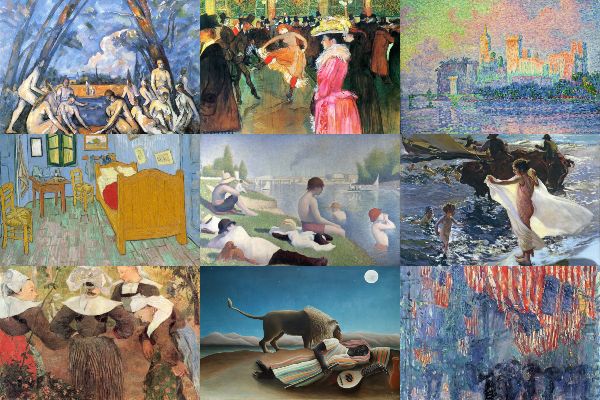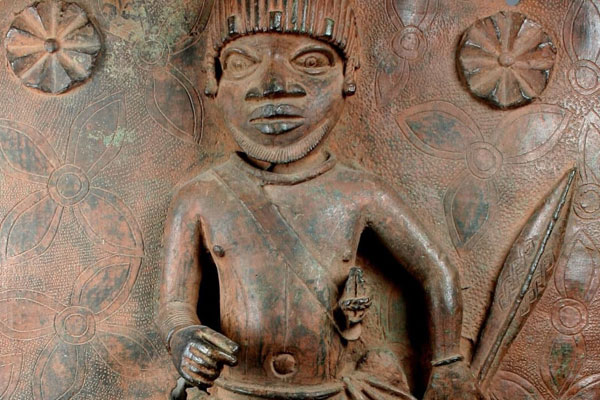50 paintings from the Impressionism
by G. Fernández – theartwolf.com
No artistic period has been as commented or discussed as Impressionism. But, as an image is worth a thousand words, theartwolf.com has decided to showcase 50 paintings to resume the very best of this fascinating Art movement.
When speaking of Impressionism, it is common to make the mistake of ascribing to this movement a series of painters who had nothing or almost nothing to do with it – Henri Rousseau, Odilon Redon – and others who, although they began attracted by Impressionism, soon separated from it, like Paul Gauguin or Paul Cézanne. If we wanted, perhaps falling into a riskily simplistic purism, to give a list of figures representing pure and essential impressionism, without interference from other movements, such a list would end up being reduced to very few names: Claude Monet -the true Michelangelo of impressionism-, Camille Pissarro -the great chronicler of rural life-, Berthe Morisot, Alfred Sisley… In any case, during the zenith of the movement, many artists contributed to the development of Impressionism.
50 impressionist paintings
Without the intention of being an in-depth study of Impressionism, but rather a tribute to it, and an invitation to discover more about the artists who developed it, we present here 50 masterpieces of this fascinating artistic period. The paintings are shown in alphabetical order following the name of their author.
These impressionist paintings are listed following the alphabetical order of the name of their author.
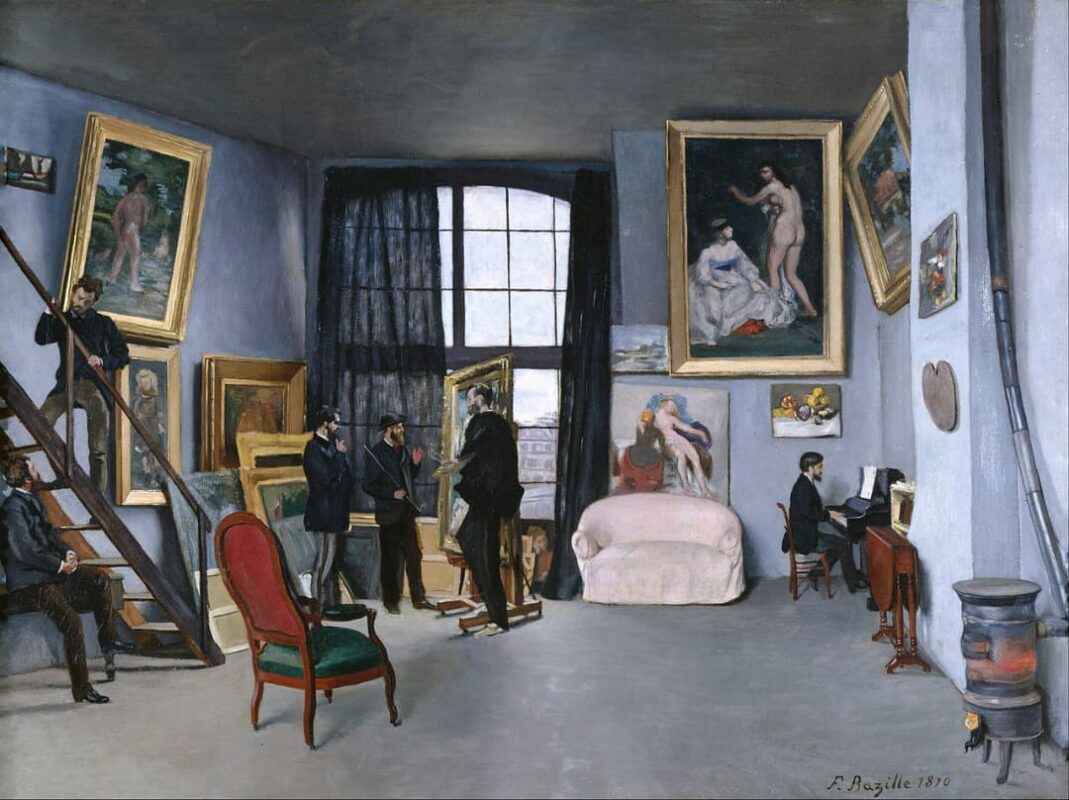
FRÉDERIC BAZILLE: “The artist’s studio (Bazille’s room); 9 rue de la Condamine” – 1870. Oil on canvas, 98 x 128,5 cm. Musée d’Orsay, Paris.
Friend of Monet, Sisley and Manet, and born into a wealthy family, Bazille is the tragic figure of impressionism, died in the Franco-Prussian War when he was only 28 years old. “The Artist’s Studio” is considered his masterpiece, in which we can find important figures of the impressionist art, such as Monet, Renoir, Manet, Emile Zola and Edmond Maître.
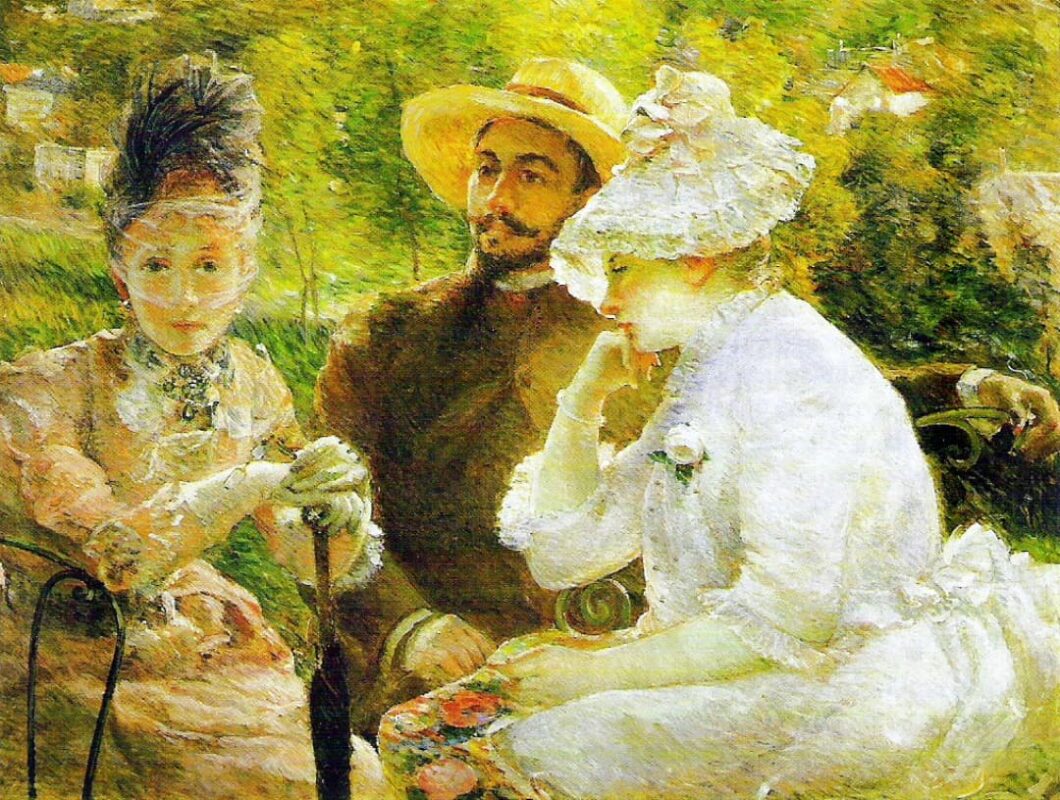
MARIE BRACQUEMOND: “Sur la terrasse à Sèvres”, 1880. Oil on canvas, 88 x 115 cm. Paris, Musée du Petit Palais
Bracquemond is possibly the most unknown of “les trois grandes dames” of Impressionism (as Berthe Morisot, Mary Cassatt and Bracquemond herself are usually known). One of the distinctive characteristics of her work is the great time spent in the preparation and execution of the paintings, as opposed to the speed and spontaneity of many of her contemporaries.
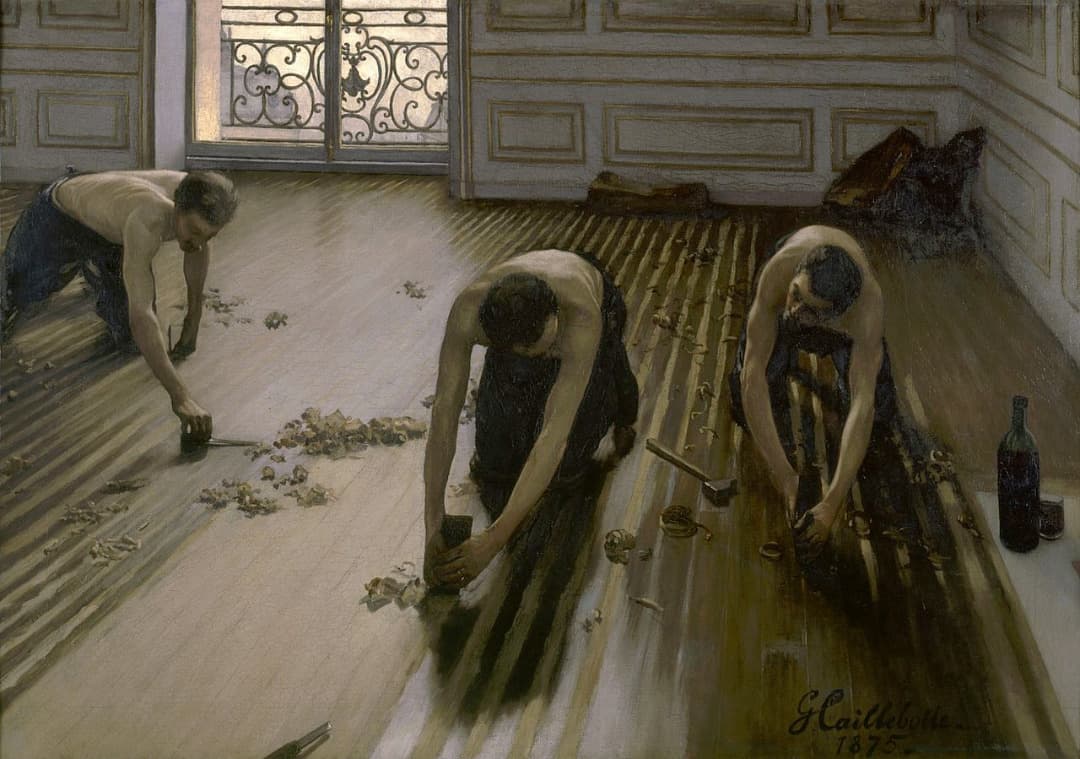
GUSTAVE CAILLEBOTTE: “Les raboteurs (The Floor Scrapers)”, 1876. Oil on canvas, 102 × 146,5 cm. Musée d’Orsay, Paris.
Caillebotte combines an almost photographic approach with a composition marked by a strange and vertiginous perspective, a constant feature in his early works. This work exemplifies like no other the astonishment that Caillebotte could have caused among those attending the first Impressionist exhibitions. Zola, who was quite fond of Caillebotte, described it as “an anti-artistic painting, clean, icy and bourgeois, by dint of exactitude.”
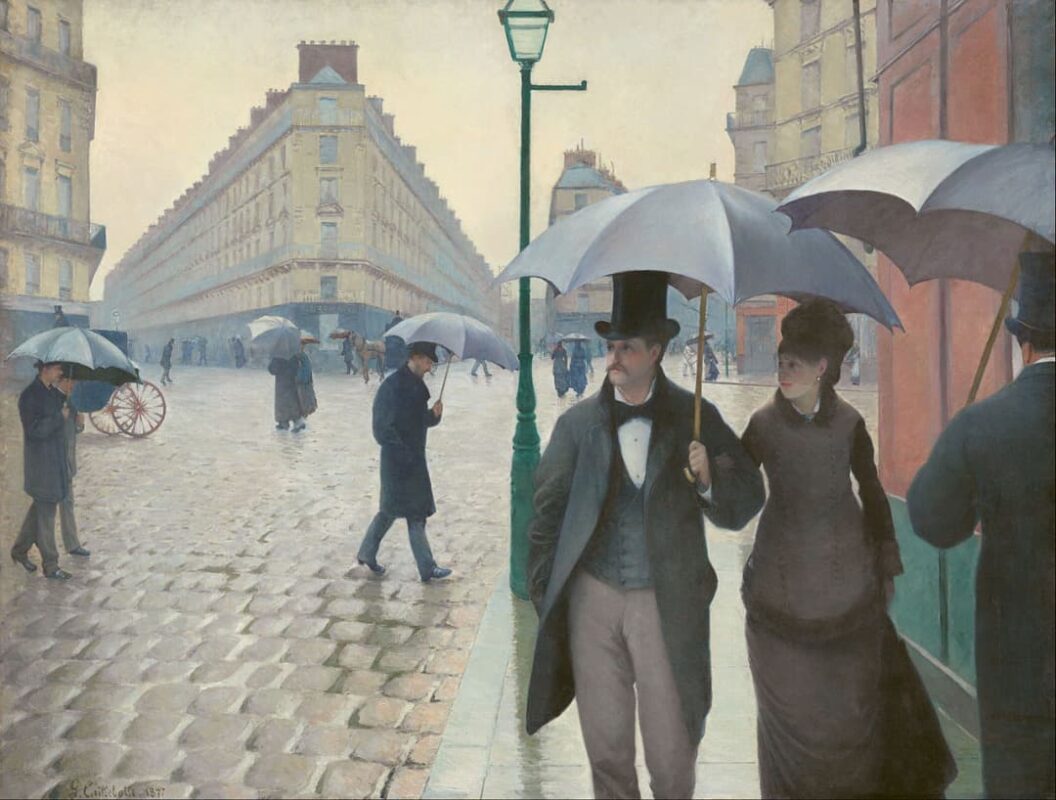
GUSTAVE CAILLEBOTTE: “Paris Street, Rainy Day (rain effect)” 1877. Oil on canvas, 212 × 276 cm. Chicago Art Institute.
This is Caillebotte’s most famous and ambitious work, exhibited at the Third Impressionist Exhibition at Rue Le Peletier, where it was not well received by mostr critics. “L’Évenement” commented that “the drawing is of a certain quality, but Caillebotte seems to have forgotten to include the rain”. Nevertheless, this is one of the best depictions of 19th century Paris ever painted.
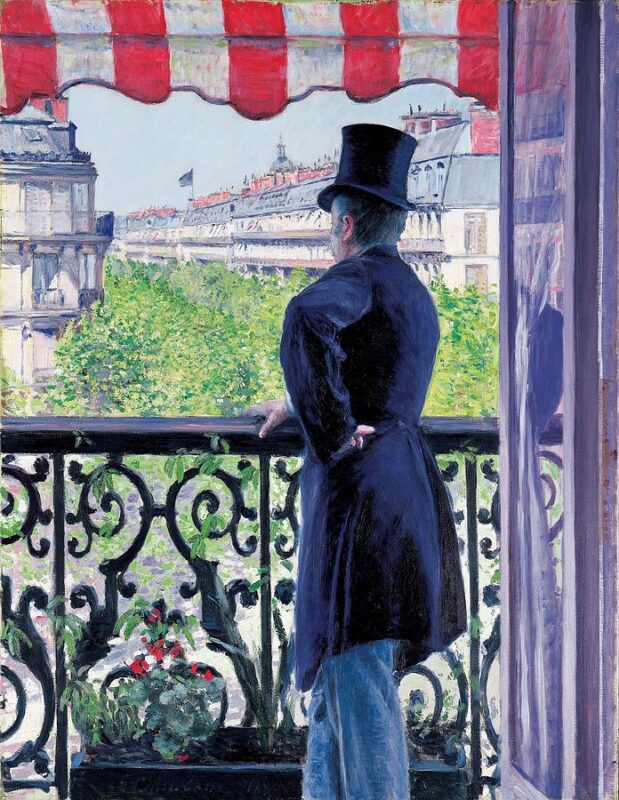
GUSTAVE CAILLEBOTTE: “L’homme au balcon, boulevard Haussmann” 1880. Oil on canvas, 116,5 x 89,5 cm. Private collection.
An extraordinary cityscape painting, in which a man in an arrogant pose surveys Haussmann’s splendorous Paris through a balcony. The painting was auctioned in 2000 for $14.3 million, then a record for a work by Caillebotte.
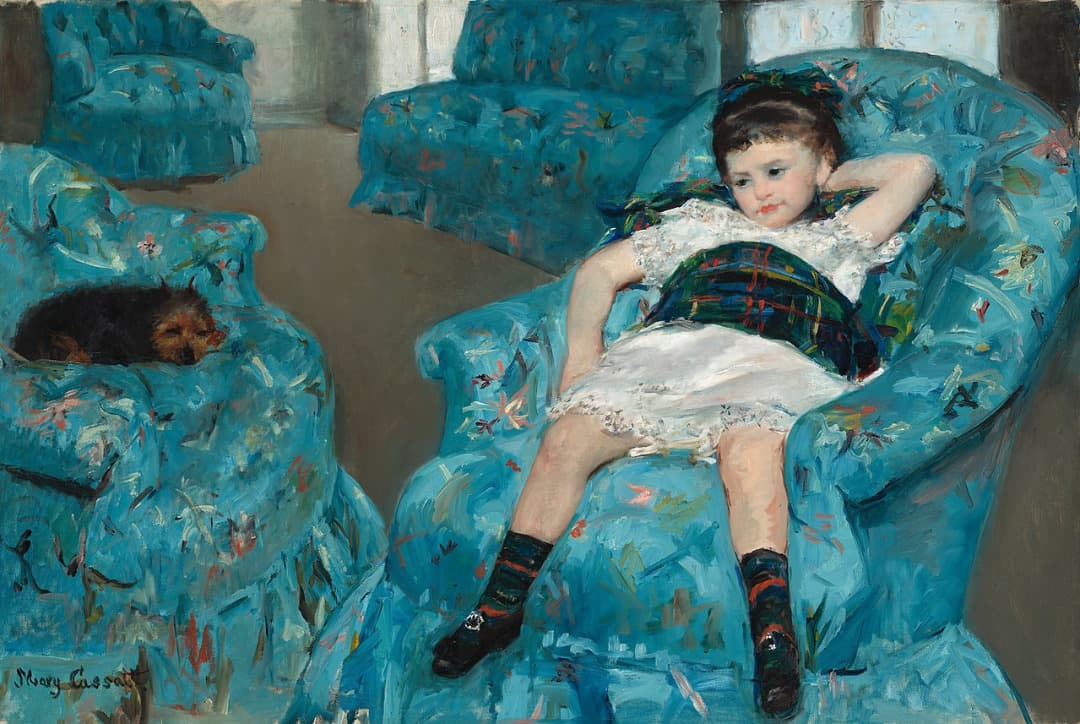
MARY CASSATT: “Petite fille dans un fauteuil bleu”, 1878. Oil on canvas, 88 x 128.5 cm. National Gallery of Art, Washington.
Mary Cassatt was born in Pennsylvania, but lived much of her life in France, where she was invited by Edgar Degas to exhibit her work with the French Impressionists. This is a work of great importance in the artist’s career, since, in part because of Degas’ intervention, it allowed the artist to exhibit with the Impressionists in 1879.
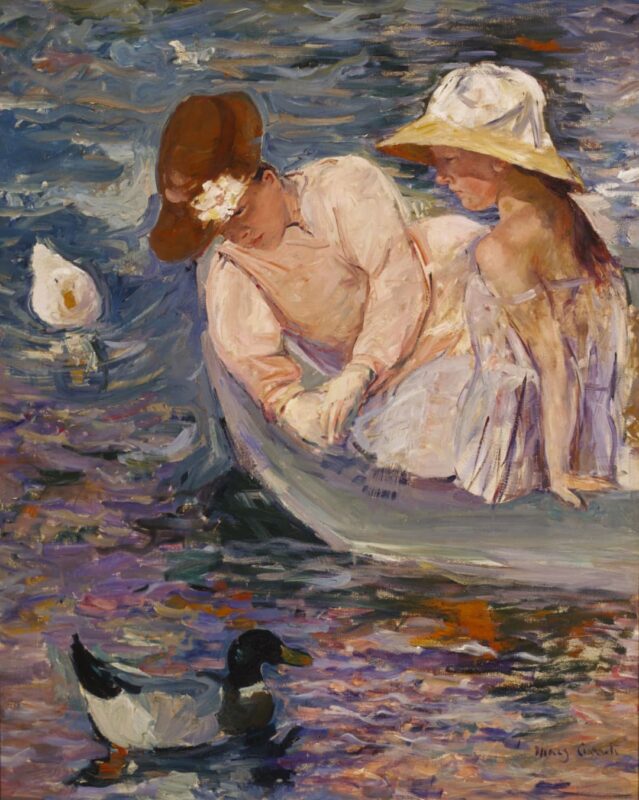
MARY CASSATT: “Summer”, 1894. oil on canvas, 100.6 x 81.3 cm. Terra Foundation for American Art.
The canvases painted by Cassatt in the 1890s are the most interesting of his career, and when the group of Impressionists dispersed, Cassatt remained in contact with several of them, becoming a model for many young American painters.
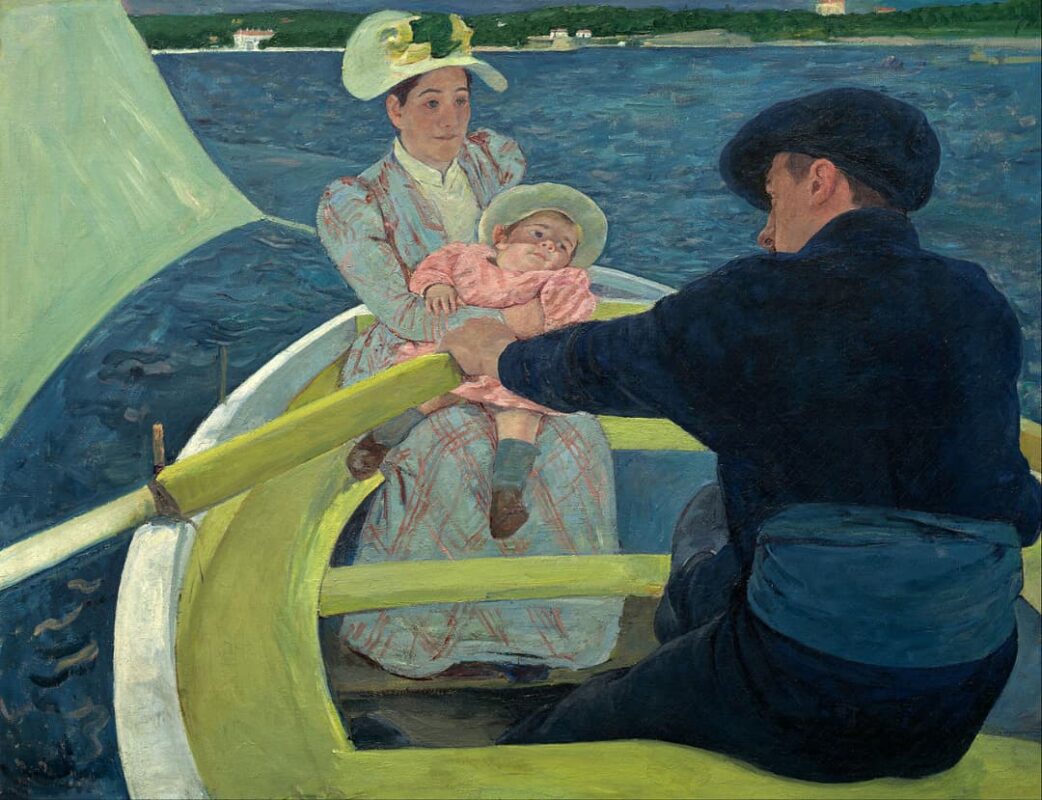
MARY CASSATT: “The Boating Party”, 1893-94. Oil on canvas, 90 × 117.3 cm. National Gallery of Art, Washington.
In this work, possibly influenced by Japanese prints, Mary Cassatt partially moves away from Impressionism to adopt a technique that employs more vivid colors, which brings her close to post-impressionist painters such as Van Gogh or Gauguin.
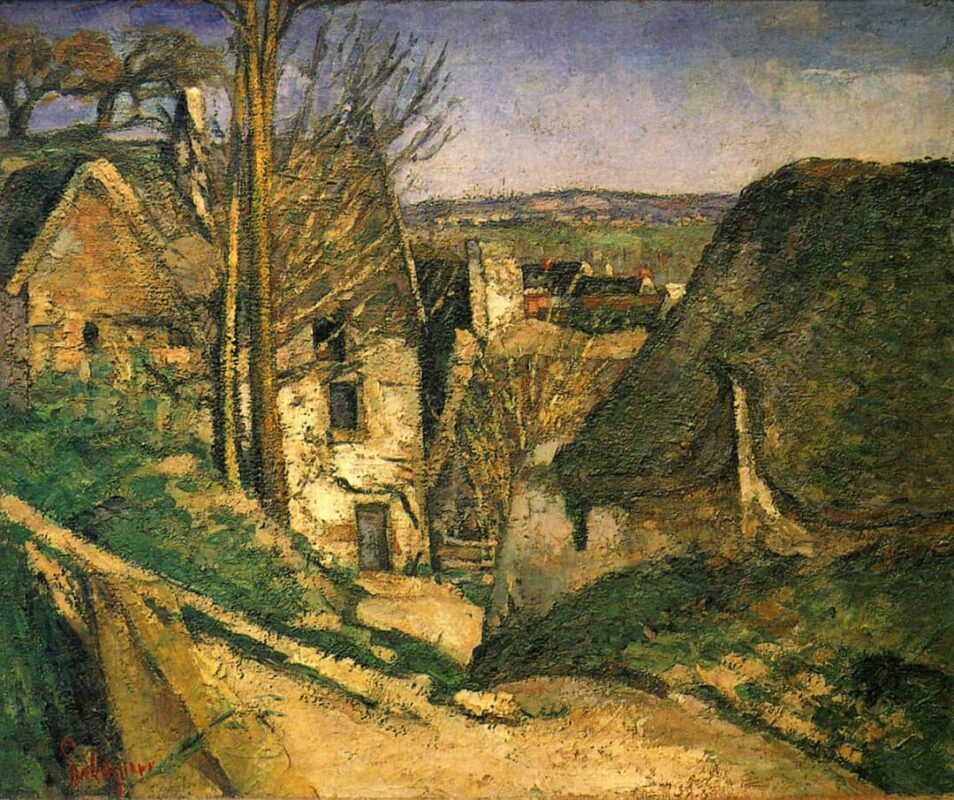
PAUL CÉZANNE: “The house of the hanged man in Auvers-sur-Oise” – 1873. Oil on canvas, 55,5 x 66,3 cm. Musée d’Orsay, Paris.
Although Cézanne is (rightly) considered a post-impressionist painter, several of his canvases from the early 1870s fully embrace impressionism. This eerily named landscape is perhaps Cézanne’s first masterpiece, and was one of the three paintings exhibited by the artist at the 1874 Impressionist Exhibition, where it was purchased by Count Armand Doria. Although “The House of the Hanged Man” may be considered an Impressionist painting, the work is executed in Cézanne’s early personal style, working the surface of the canvas with a knife.
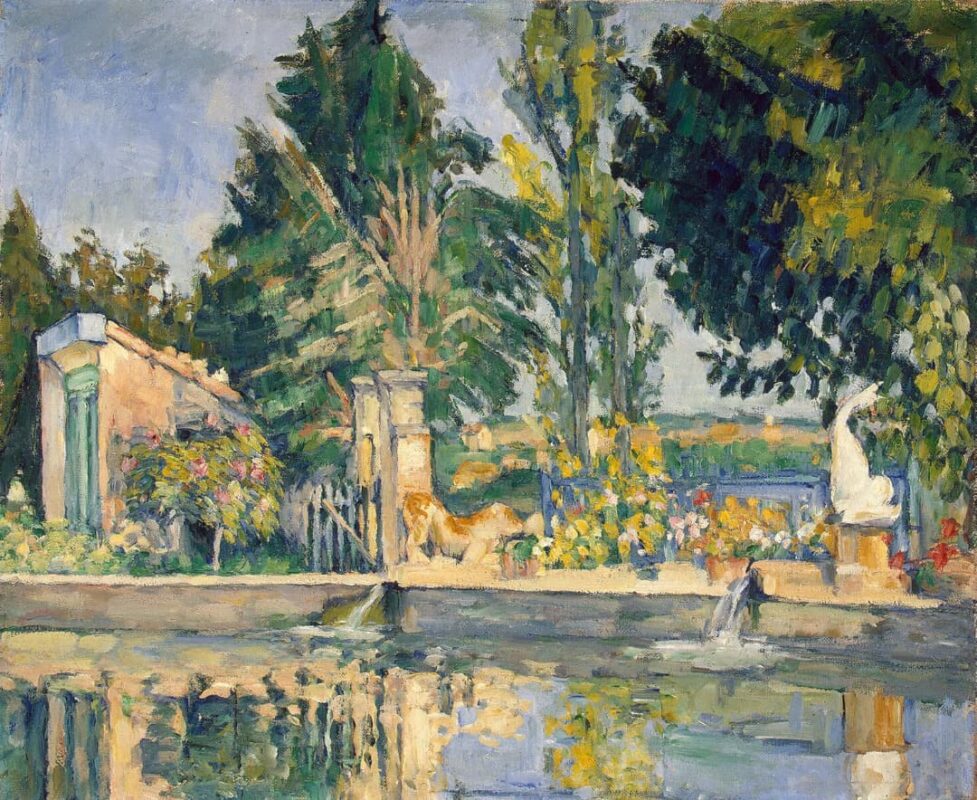
PAUL CÉZANNE: “Le Bassin du Jas de Bouffan” – 1876. Oil on canvas, 49 x 55 cm. Hermitage Museum, St. Petersburg.
This modestly sized work is perhaps the most impressionistic of all the paintings by Paul Cézanne, who in the late 1870s began to abandon the movement, developing a bolder, almost cubist style that would lay many of the foundations of 20th century art.
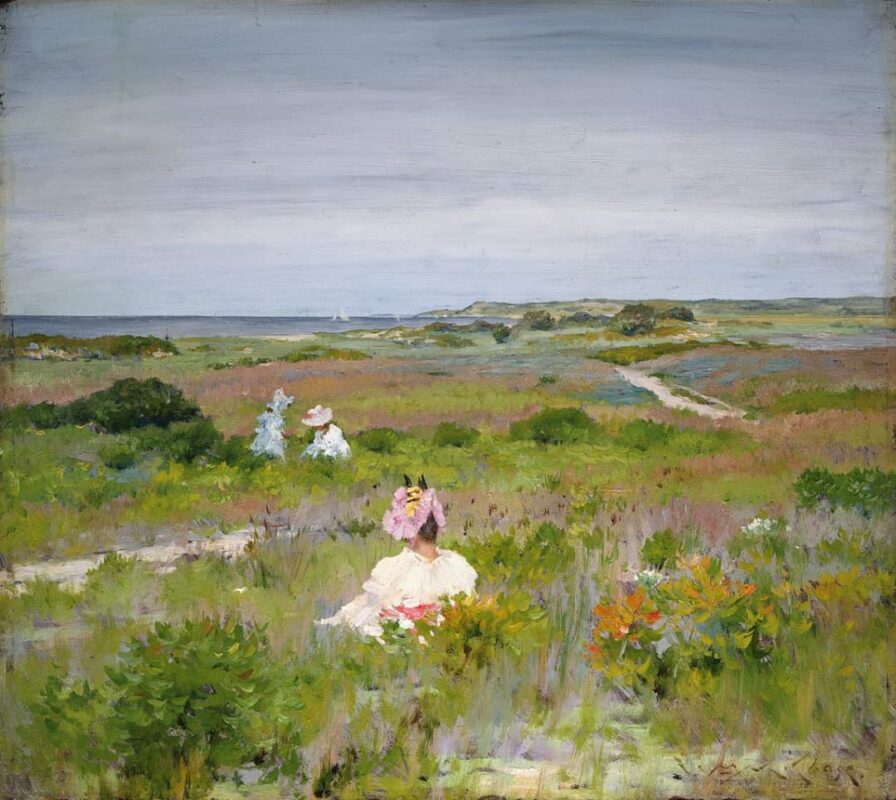
WILLIAM MERRITT CHASE: “Landscape: Shinnecock, Long Island”, 1895. Oil on panel, 36.3 × 40.9 cm. Princeton University Art Museum
Impressionism, an eminently French movement, had followers in other European countries, and even in America. One of the most prominent was William Merritt Chase, who probably knew the work of the Impressionists through the gallery that the art dealer Durand-Ruel had opened in New York.
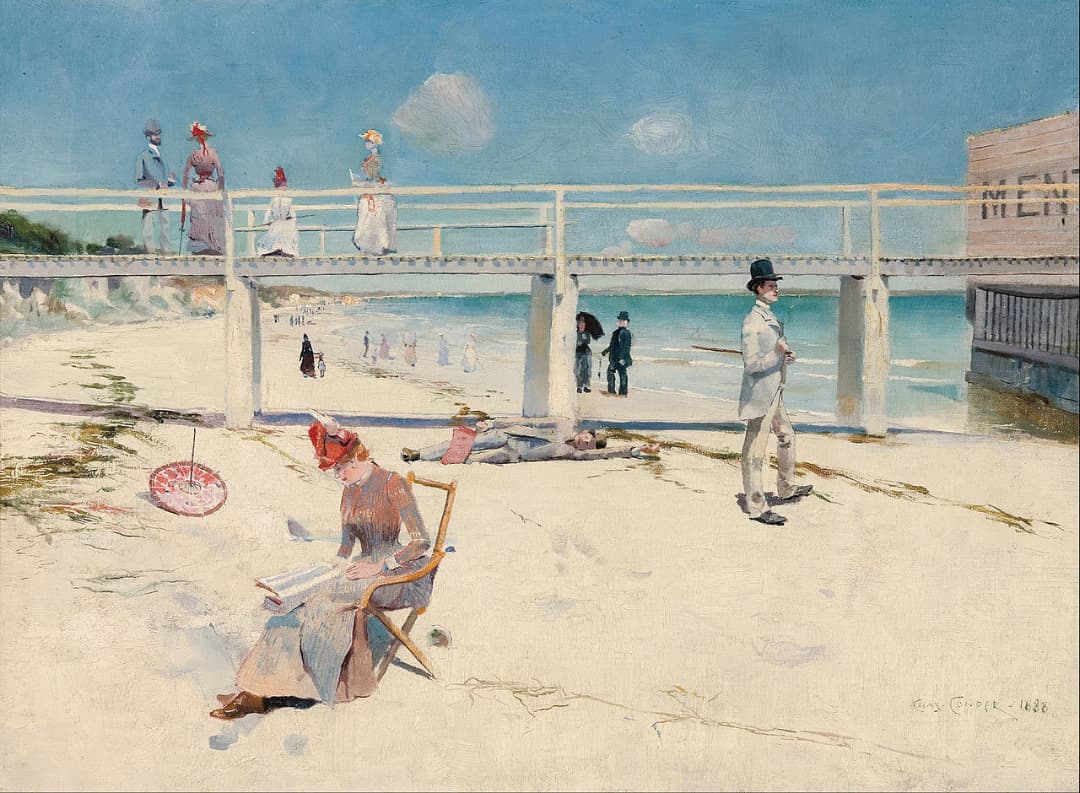
CHARLES CONDER: “A holiday at Mentone,” c.1888. Oil on canvas, 46.2 × 60.8 cm. Art Gallery of South Australia, Adelaide.
Born in England, Conder (1868-1909) emigrated to Australia when he was only 20 years old, and today he is considered a key figure in Australian painting. Although his art was not well received in his time, he was praised by other artists such as Pissarro and Degas, and Toulouse-Lautrec even portrayed him in 1892.
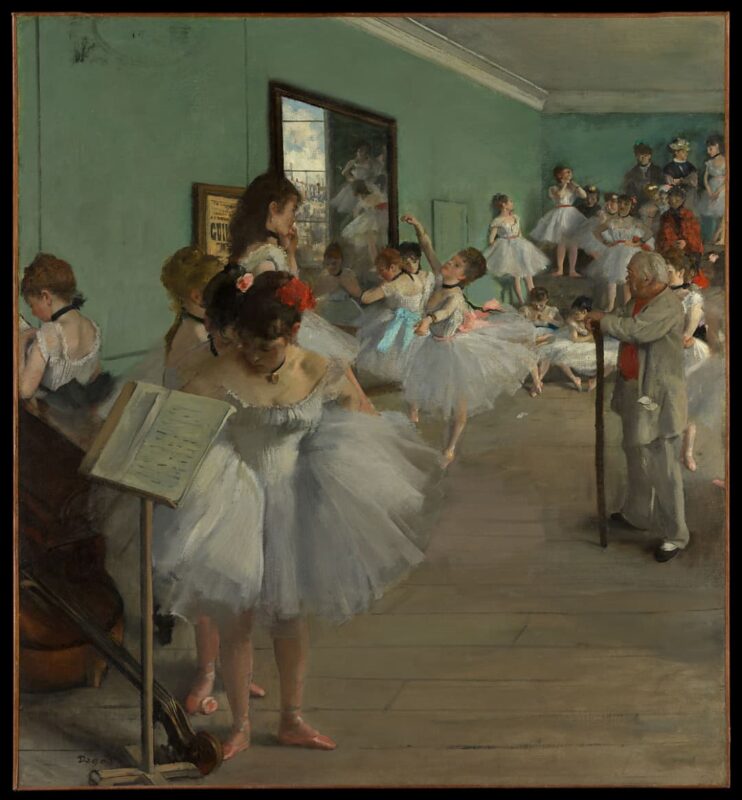
EDGAR DEGAS: “The Dance Class,” c.1874. oil on canvas, 83.5 x 77.2 cm. Metropolitan Museum, New York.
Edgar Degas never considered himself an impressionist painter, but his works (and his personal influence) are essential to understand this movement. Degas’ paintings depicting young dancers or ballerinas are among his greatest -and certainly most famous- achievements. The artist depicted the young girls as true professionals, practicing all day long under the strict tutelage of their teacher. In this canvas, the teacher appears in the center-right of the composition, overseeing the scene as an authority with ultimate powers.
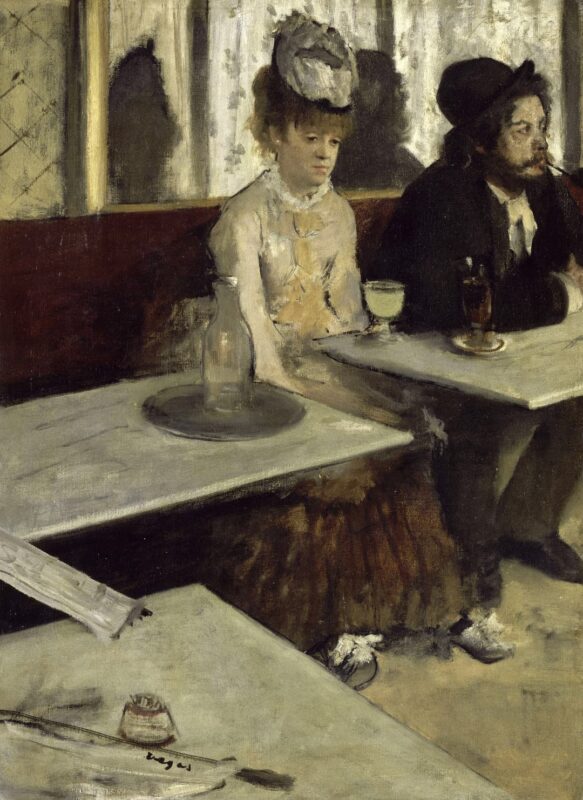
EDGAR DEGAS: “L’absinthe (absinthe drinkers)”, 1876. Oil on canvas, 92 × 68 cm. Musée d’Orsay, Paris.
“What a slut!” exclaimed George Moore upon seeing the woman in the painting, adding that “this tale is not pleasant, but it is quite a lesson,” and that “no one has ever said so much in so little space, nor has anyone ever expressed himself so simply (…) thanks to the science of drawing, invisible but omnipresent, almost impresonal.” The sad and melancholic figures seem to have influenced works by later artists, such as Picasso during his Blue Period, or the solitary urban scenes of Edward Hopper.
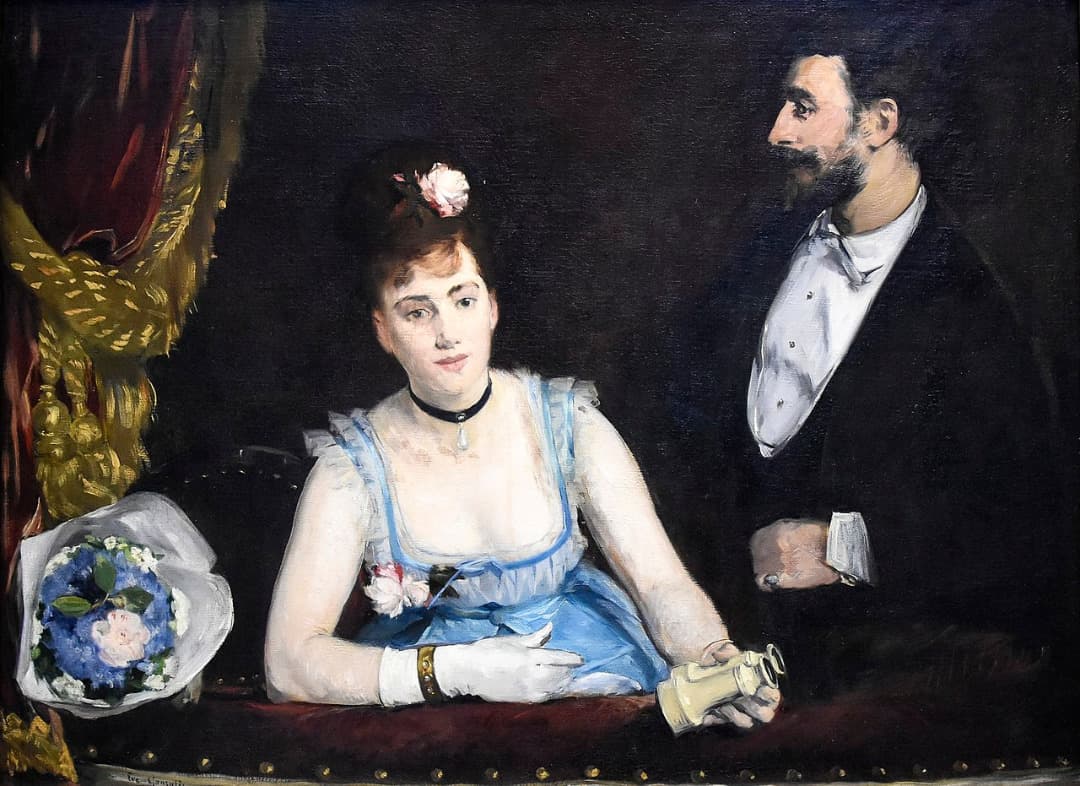
EVA GONZALÈS: “Une loge aux Italiens”, 1874. Oil on canvas, 98 x 130 cm. Musée d’Orsay, Paris.
One of the most (unjustly) unknown figures of Impressionism, tragically died in childbirth at the age of 34 (only a few days after the death of his master, Edouard Manet). This work attracted the attention of many critics when it was first exhibited in 1874, being however rejected for reasons unrelated to its pictorial quality. The harsh discrimination against women artists was a serious problem that Gonzalès had to face throughout her life.
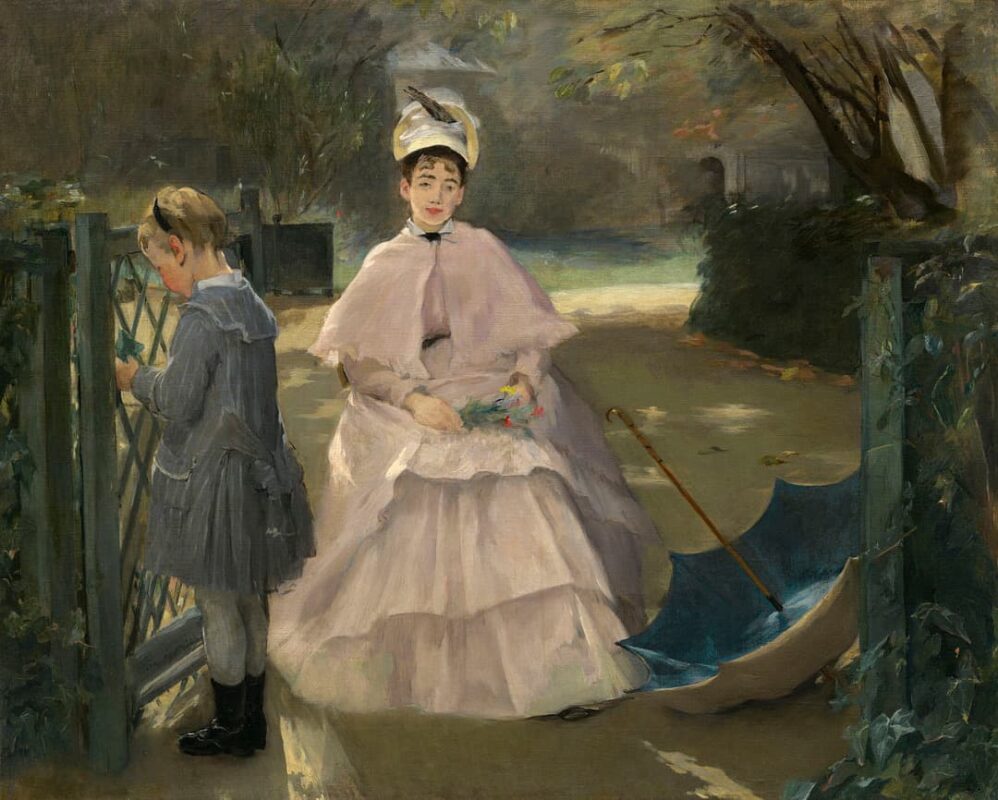
EVA GONZALÈS: “Nounou avec enfant”, 1877-78. Oil on canvas, 65 x 81,4 cm. National Gallery, Washington.
Perhaps the most accomplished of all the paintings by Eva Gonzalès. A work of agile brushwork, bold composition and with an interesting use of light and shadow, reminiscent in some ways of Manet’s best works of the late 1870s.
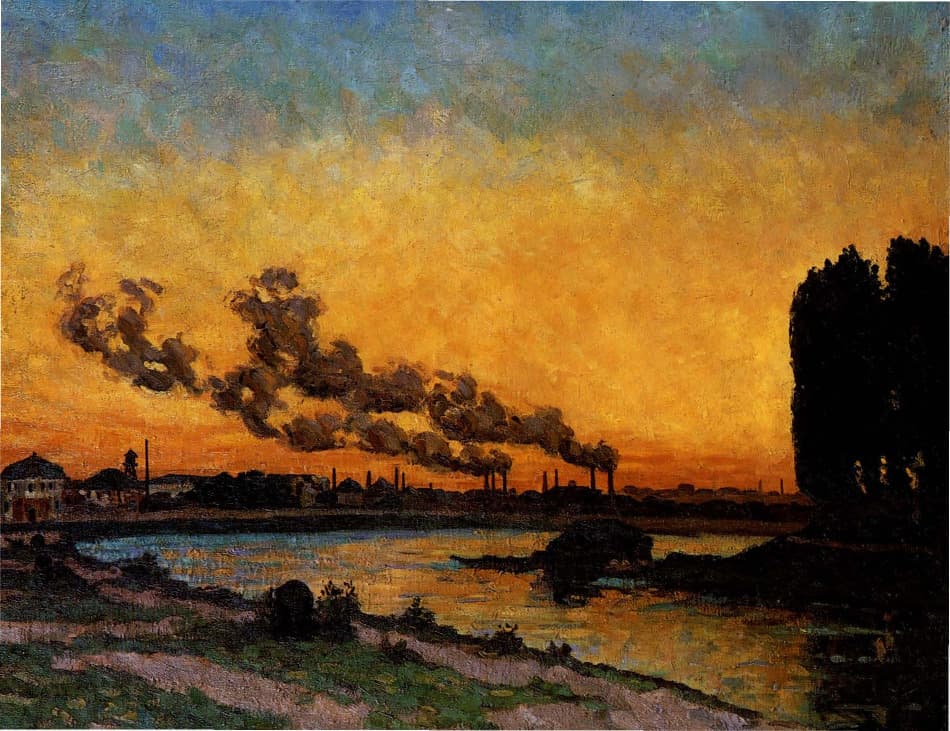
ARMAND GUILLAUMIN: “Soleil couchant à Ivry (sunset in Ivry)”, 1873. Oil on canvas, 81 x 65 cm. Musée d’Orsay, Paris.
Although not as famous as Monet, Renoir, and other leading Impressionists, Armand Guillaumin (1841-1927) was an important figure in Impressionism. A friend of Renoir, Cézanne, and Van Gogh, Guillaumin is arguably the most colorful of them all, which can be clearly seen in his landscapes of Paris, Provence, and the Mediterranean Coast.
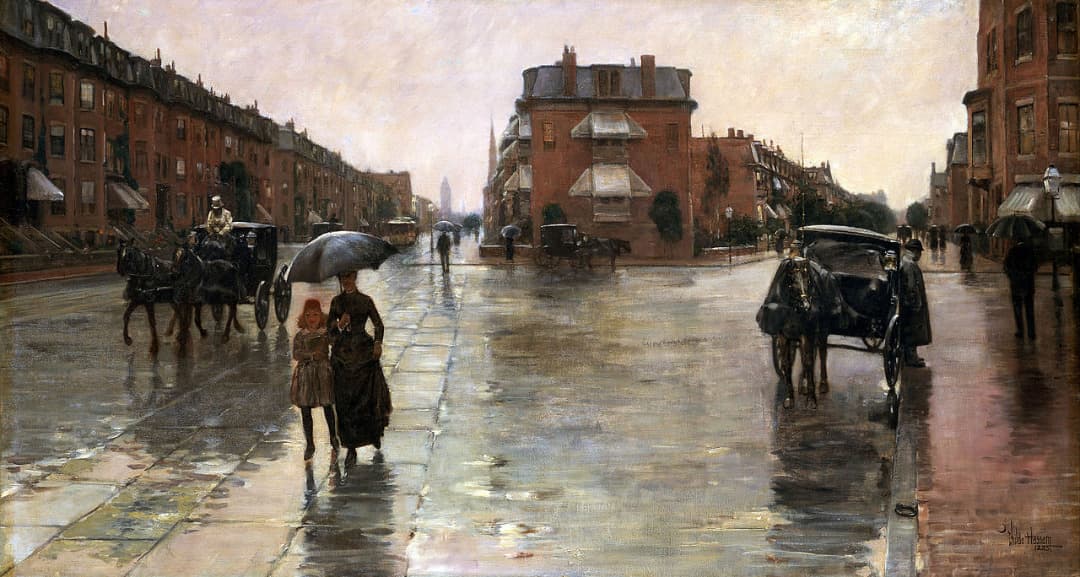
CHILDE HASSAM: “Rainy Day, Boston”, 1885. Oil on canvas, 66.3 x 122 cm. Toledo Museum of Art.
Childe Hassam is often considered one of the great exponents of American Impressionism, although his style oscillated between Impressionism and Post-Impressionism. This painting is clearly reminiscent of Gustave Caillebotte’s “Paris, Rainy Day”.
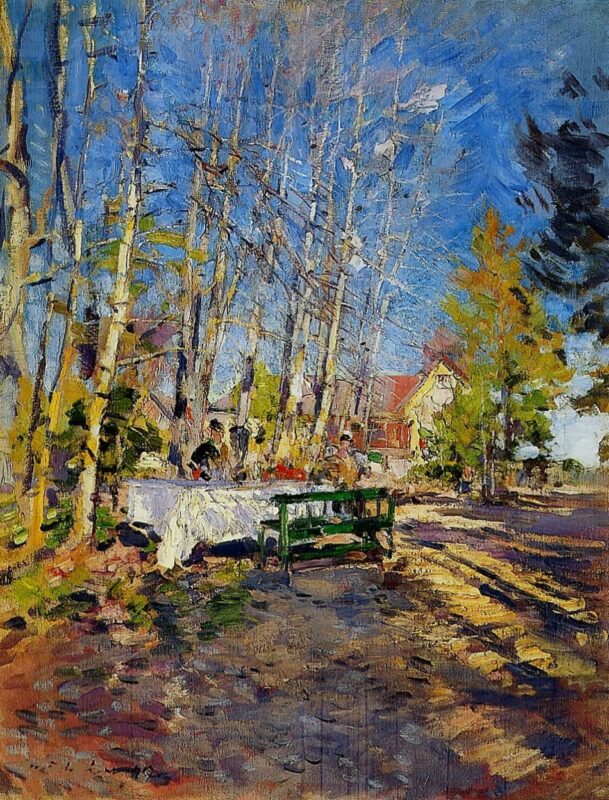
KONSTANTIN KOROVIN: “Spring” – 1917. Oil on canvas. State Russian Museum, St. Petersburg
“Paris was a “shock” for me… Impressionists… in them I found everything I could not find at home, in Moscow“. Korovin (1861-1939) was, together with his friend Valentin Serov, the great figure of the Russian Impressionist painters. Strongly influenced by French artists, he nevertheless developed a very personal style that blends the typical elements of French impressionism with the use of vibrant colors, so typical of Russian painting of the time.
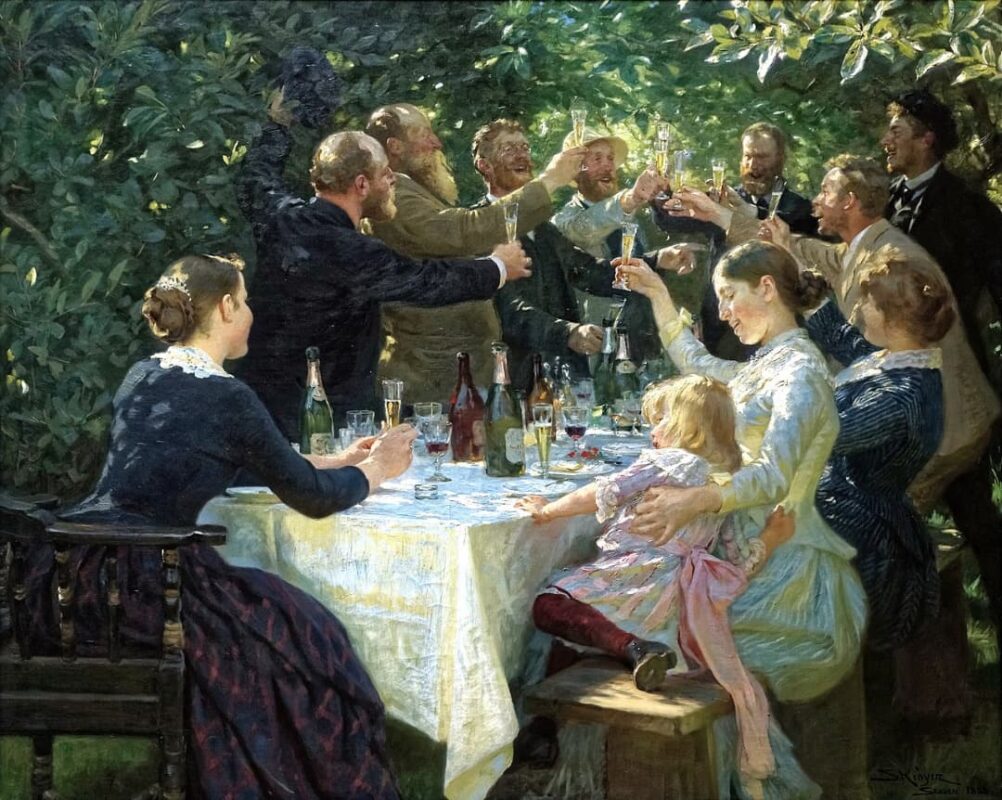
PEDER SEVERIN KRØYER: “Hip, hip, hurrah!” – 1888. Oil on canvas, 134.5 × 165.5 cm. Gothenburg Museum of Fine Arts
Impressionism was present in Denmark through Peder Severin Krøyer, a painter who had contact with the leading French impressionists during several of his trips in the late 1870’s and early 1880’s. “Hip, hip, hurrah!” is his most famous painting, a cheerful work that immediately recalls Manet’s “Lunch on the Grass” and Renoir’s “The Boatmen’s Luncheon”.
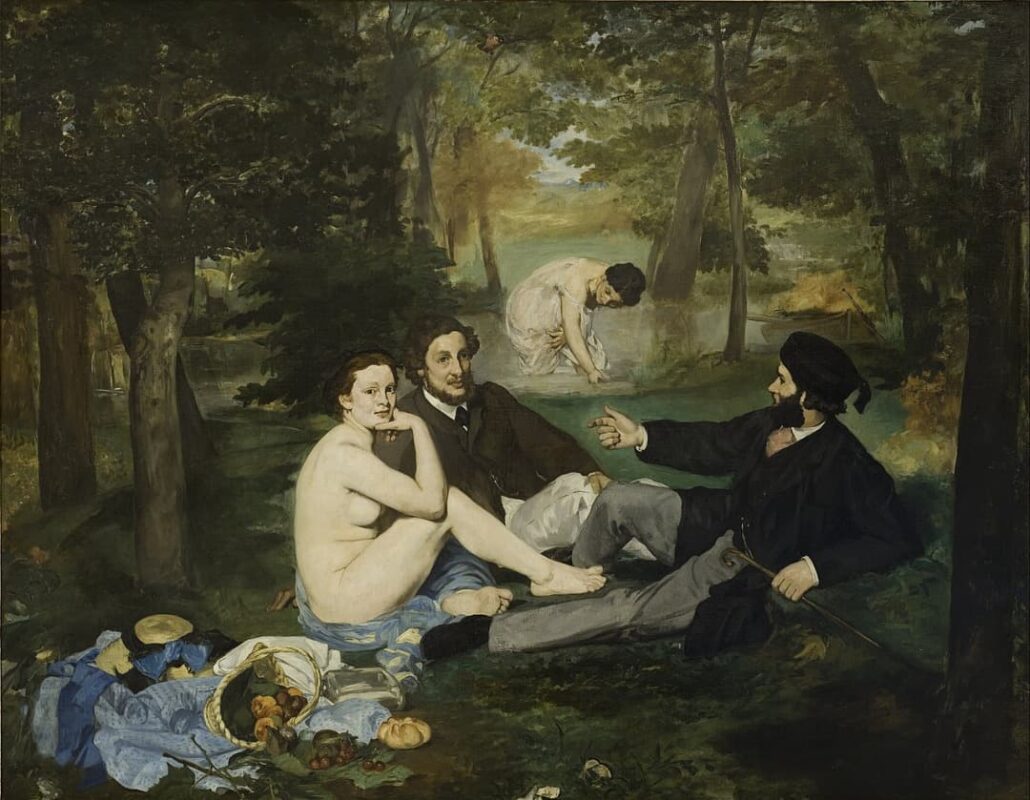
EDOUARD MANET: “Le Déjeuner sur l’Herbe (luncheon on the grass)”, 1862/63. Oil on canvas, 208 x 264,5 cm. Musée d’Orsay, Paris.
Some experts have called this work “the origin of Impressionism”, and what seems clear is that it is by no means a realist painting. Manet shook the Art world when he exhibited this work at the Salon des Refusés in 1863. Émile Zola wrote about this monumental canvas: “It is, in a few words, a vast assemblage, full of atmosphere, a corner of nature represented with admirable simplicity.”
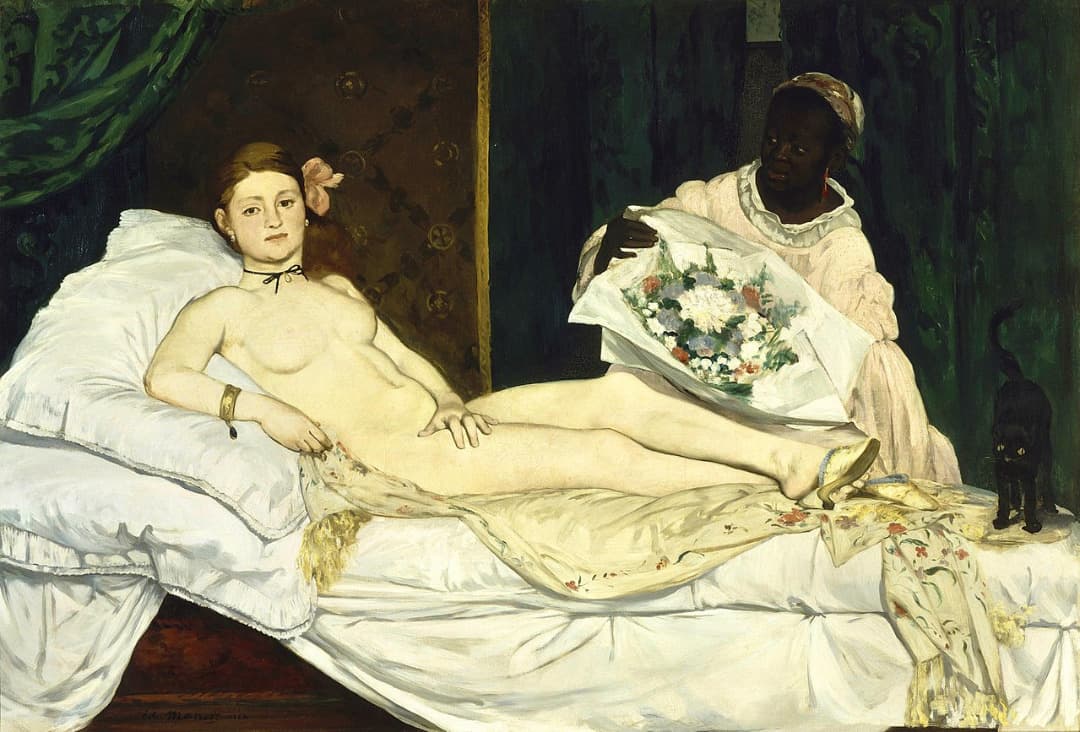
EDOUARD MANET: “Olympia”, 1863. Oil on canvas, 130,5 x 190 cm. Musée d’Orsay, París.
We can say that this is one of the most controversial works in the history of painting, and it was not at all well received by critics when it was exhibited in 1865. “Who is that yellow odalisque?” wondered Jules Claretie of “L’Artiste”, while Antonin Proust declared that “if the painting of the ‘Olympia’ has not yet been destroyed, it is only thanks to the precautions taken by the exhibition.” The work was, however, defended by Émile Zola.
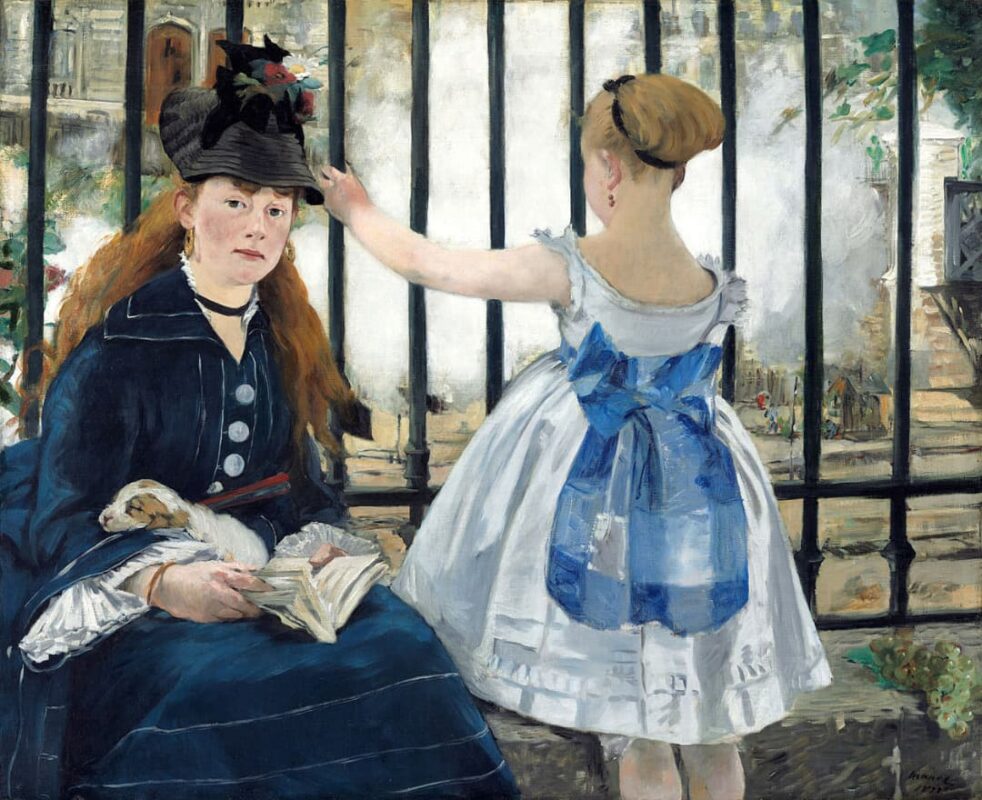
EDOUARD MANET: “Le Chemin de fer (The Railway)”, 1873. Oil on canvas, 93.3 x 111.5 cm. National Gallery, Washington.
“The Railway” is perhaps Manet’s first fully Impressionist work. Exhibited at the Paris Salon of 1874, it was panned by most critics. However, a few years after its completion, it was acquired by the art dealer Durand-Ruel for 5,400 francs, a very respectable price. Durand-Ruel later sold it to the American millionaire Henry Osborne Havemeyer for 100,000 francs.
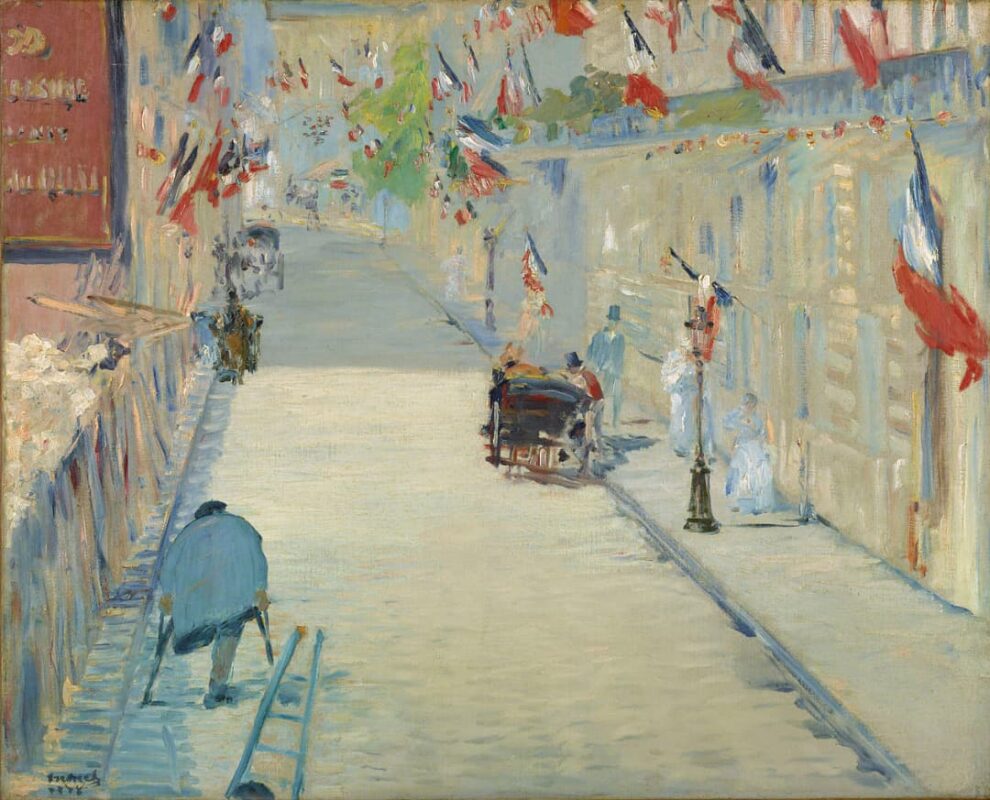
EDOUARD MANET: “La Rue Mosnier aux drapeaux”, 1878. Oil on canvas, 65,4 x 80 cm. Getty Museum, California.
Although not as well known as the previous two works, or as his celebrated “Bar at the Folies Bergere,” “La Rue Mosnier aux drapeaux” may be the most “impressionistic” of all Manet’s works. The work, acquired in 1989 by the Getty Museum for a record price for the artist, had a major influence on Childe Hassam’s “Avenues” paintings.
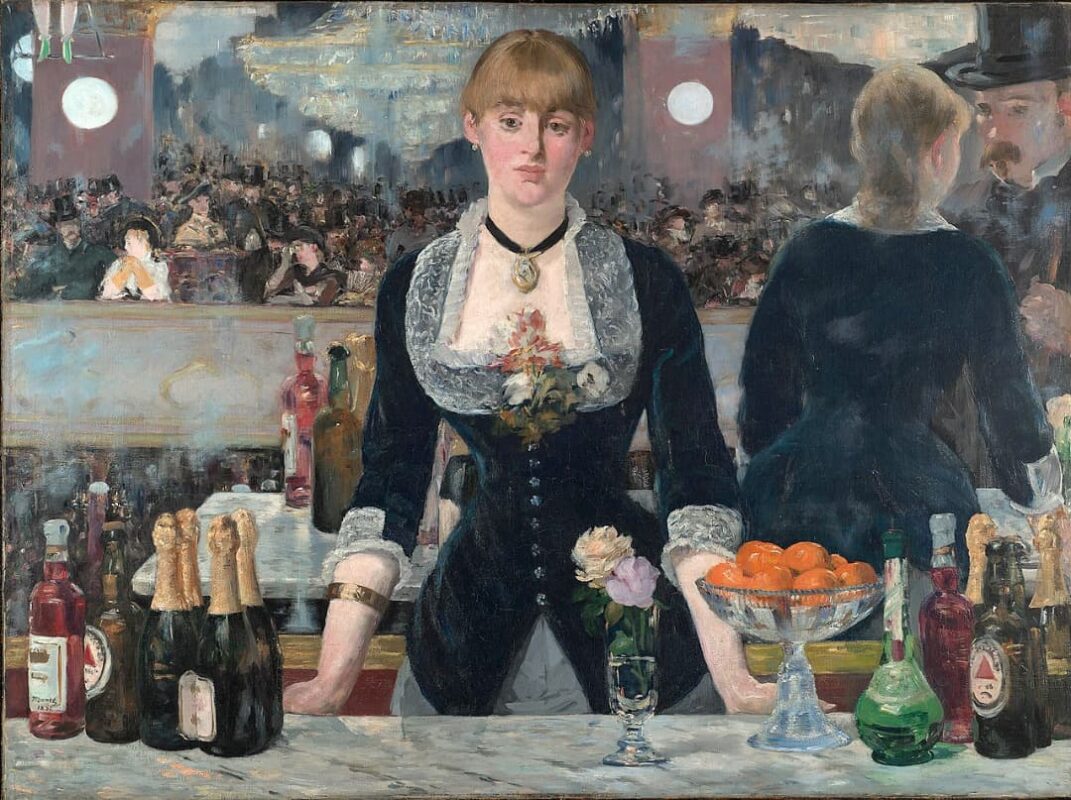
EDOUARD MANET: “Bar at the Folies Bergere”, 1882. Oil on canvas, 96 x 130 cm. London, Courtauld Gallery.
Manet’s paintings of cafes and restaurants are true “portraits” of 19th century Parisian society, and this fabulous and intricate painting is undoubtedly one of his masterpieces. It is striking how the reflected image of the waitress does not occupy the position she should occupy. Is this a terrible mistake of the artist, or a representation of a double reality, an “illusion” in the mind of the girl with the absent look?
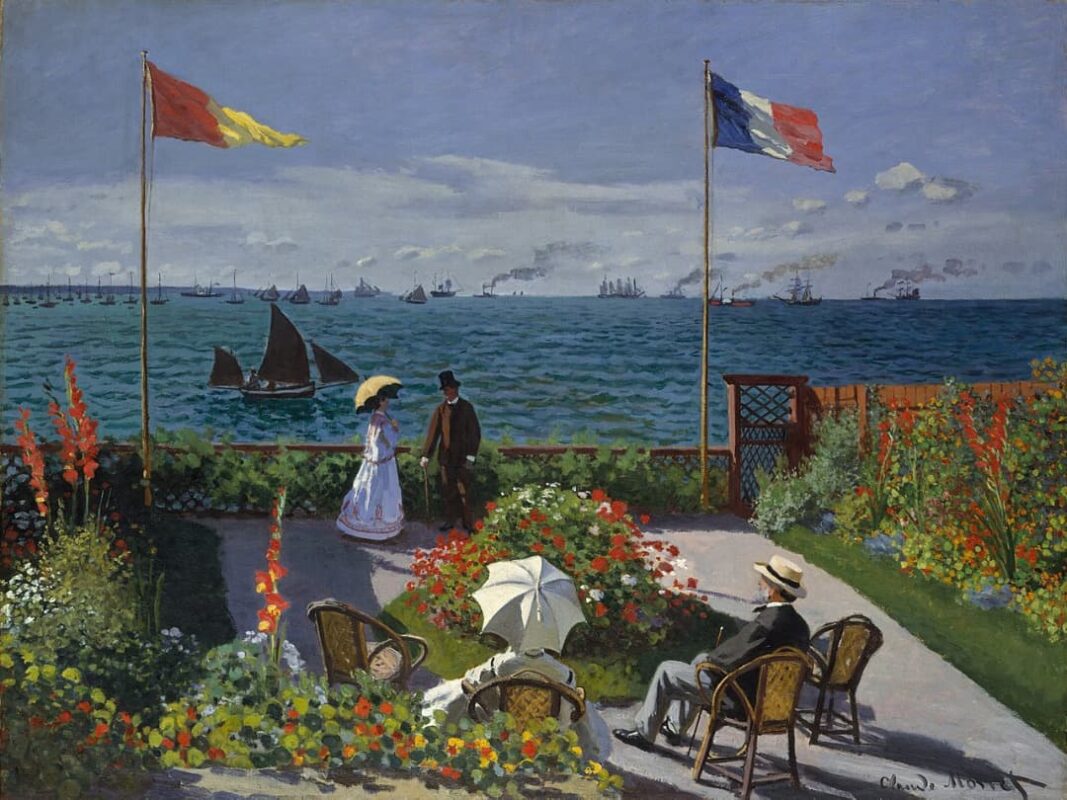
CLAUDE MONET – “Terrace at Sainte Adresse” (1867). Oil on canvas, 98.1 x 129.9 cm. New York, Metropolitan Museum.
The bourgeois scene unfolds under a powerful “plein air” light. Three planes of land, sea and sky divide and hierarchize the composition, organized vertically by the two flags waving vividly in the gentle ocean breeze. The painting has such a charm that we are immediately tempted to sit down on one of the empty chairs to enjoy this placid Sunday afternoon.
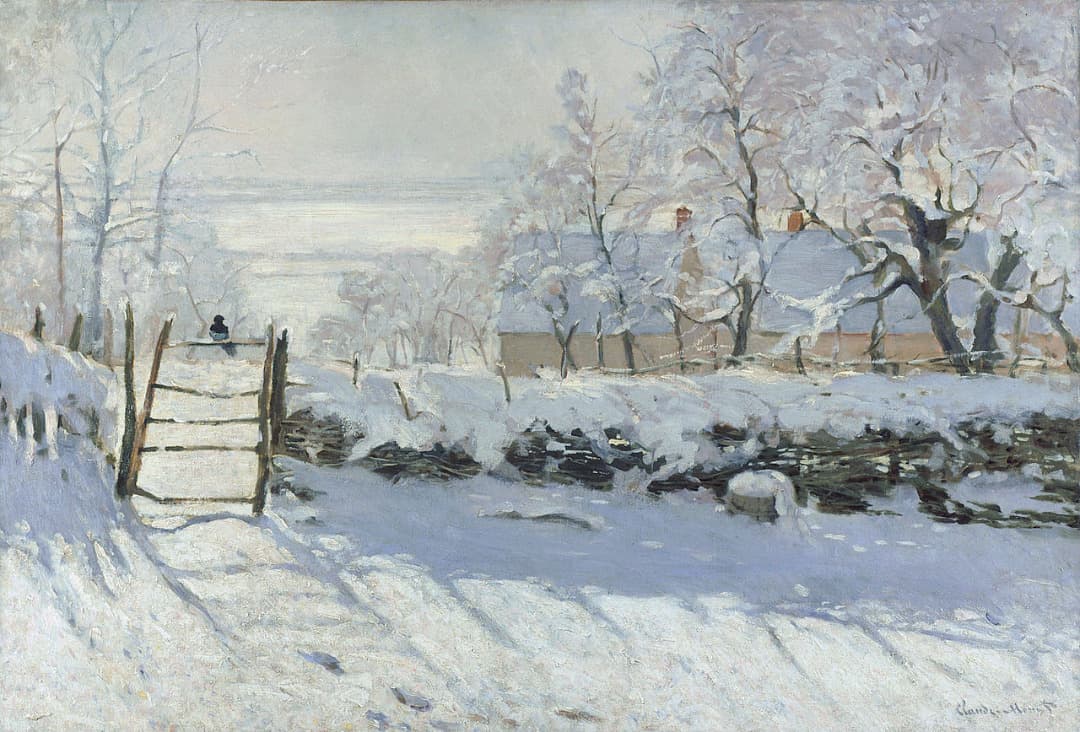
CLAUDE MONET – “La Pie (the magpie)” (1868-69). Oil on canvas, 89 × 130 cm. Musée d’Orsay, Paris.
This sensational winter landscape by Claude Monet was of extraordinary importance for the development of the Impressionist landscape. As the Musée d’Orsay notes in its entry on this work, “with this painting, the Impressionist landscape was born, five years before the first official exhibition at which the movement received its name.”
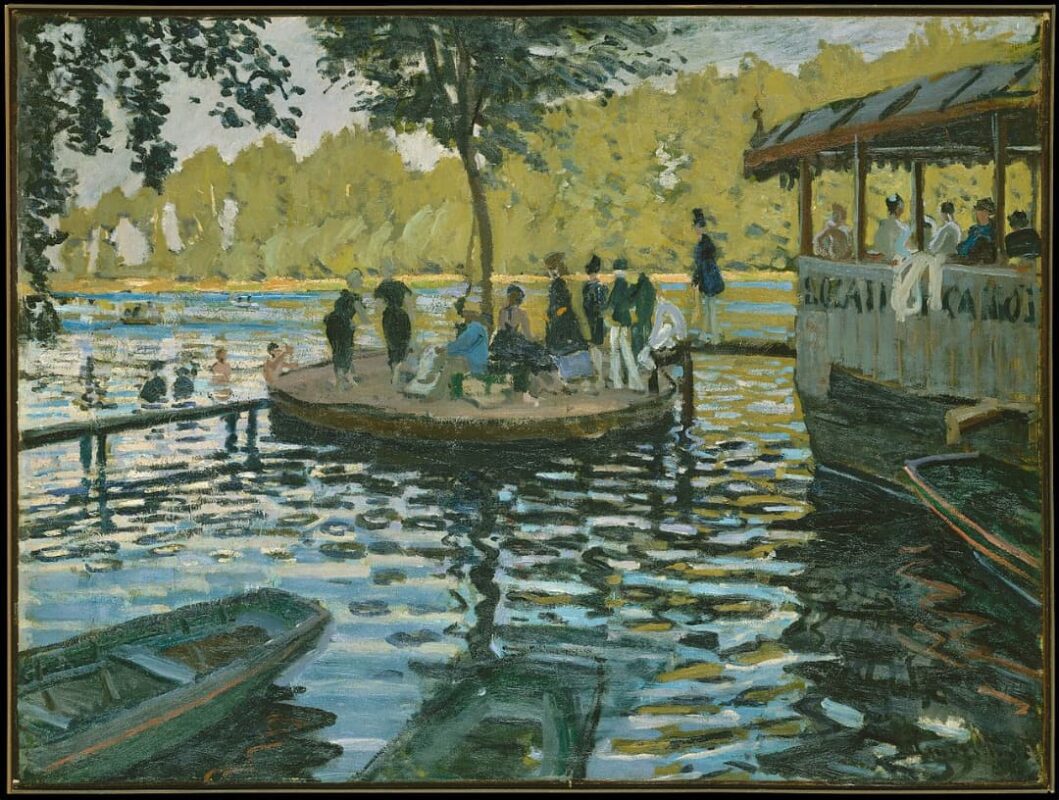
CLAUDE MONET – “Bain à la Grenouillère” (1869). Oil on canvas, 75 x 99,7 cm. New York, Metropolitan Museum.
Along with the two previous works by the same artist, “Bain à la Grenouillère” is a fundamental painting for understanding the genesis of Impressionism.
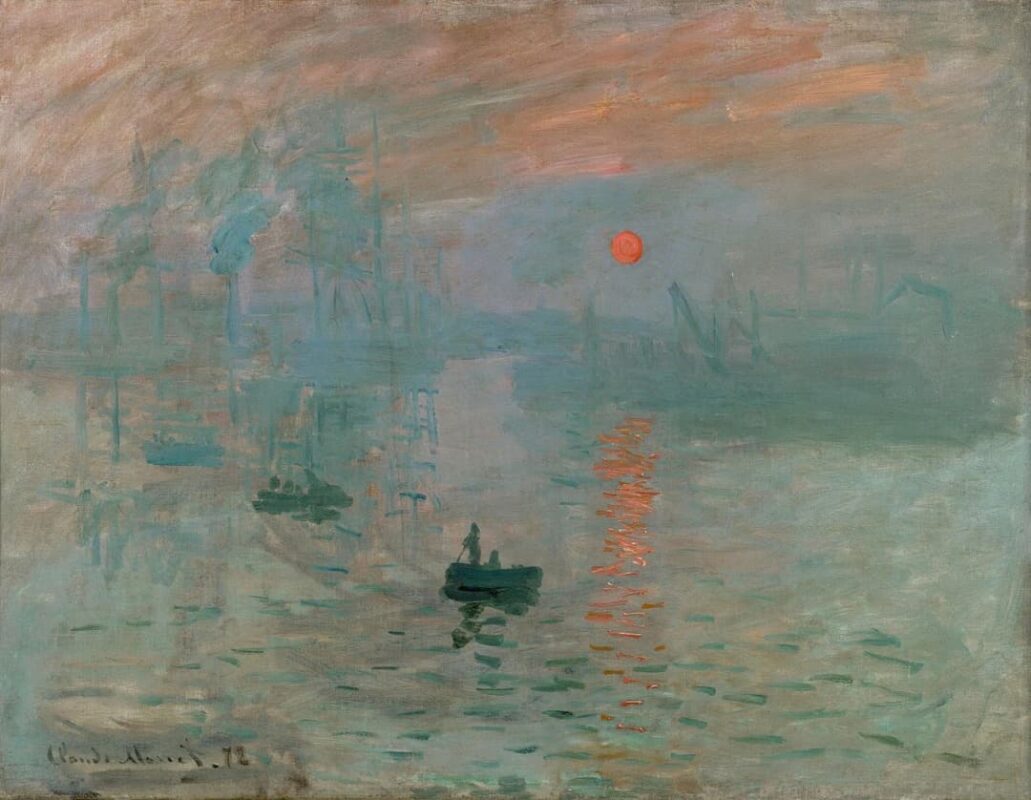
CLAUDE MONET – “Impression, sunrise” (1873). Oil on canvas, 47 × 64 cm. Musée d’Orsay, Paris.
“The unpainted paper on the walls is better finished than this seascape” wrote a critic of the time about this canvas, exhibited at the First Impressionist Exhibition in 1877. This was not an isolated criticism, but just one example of how critics of the time reacted to this painting, and by extension, to Impressionist painting (a movement that would eventually owe its name to this painting). It is not surprising, then, that no one offered the 1,000 francs that Monet asked for this painting in 1874.
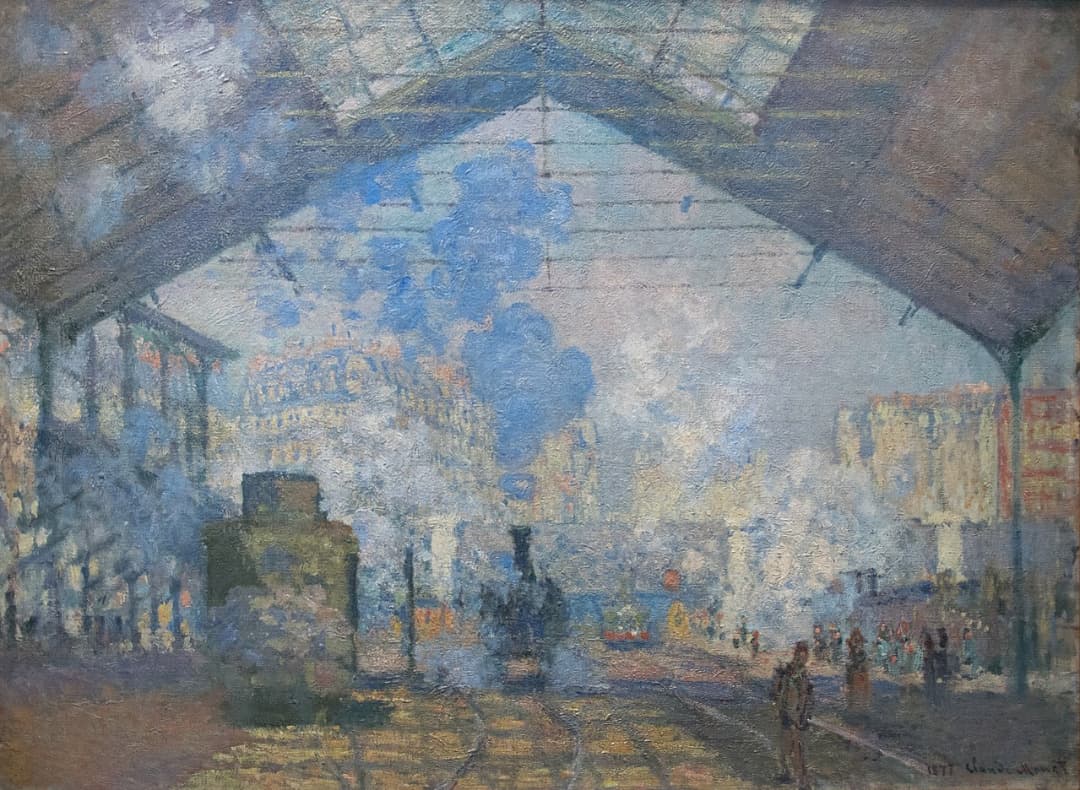
CLAUDE MONET – “Le Gare Saint Lazare (The Saint Lazare Station)”, 1877. Oil on canvas, 75 × 104 cm. Musée d’Orsay, Paris.
“It is a pictorial symphony,” wrote the magazine “L’homme libre” when this painting was shown at the Third Impressionist Exhibition in 1877, one of the few positive reviews of a painting at the exhibition. “Monet likes this station, and he had painted it before with less success. This time it is wonderful. He has managed to capture not only the movement, the activity, but also the noise. It is unforgettable.”
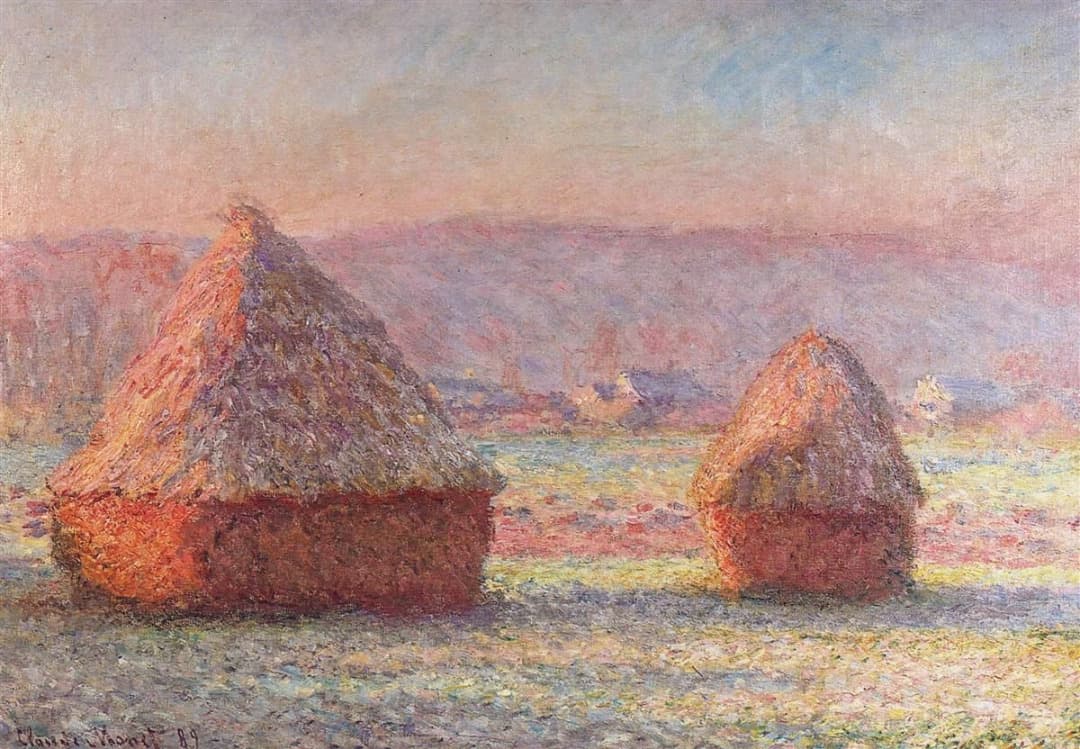
CLAUDE MONET – “Meules (haystacks, thawing)” – 1889. Oil on canvas, 65 x 92 cm. Hill-Stead Museum, Farmington
Between 1889 and 1891 Monet produced a series of 15 canvases depicting haystacks on the outskirts of Giverny. Kandinsky had the opportunity to see one of these works at an exhibition in Moscow in 1895, and was impressed to the point of suggesting it as the first abstract painting: “And suddenly, for the first time, I saw a painting. I read in the catalog that it was a pile of hay, but I could not recognize it (.) I realized that the object of the painting was missing (.) What I was perfectly aware of was the unsuspected and hitherto hidden strength of the palette”.
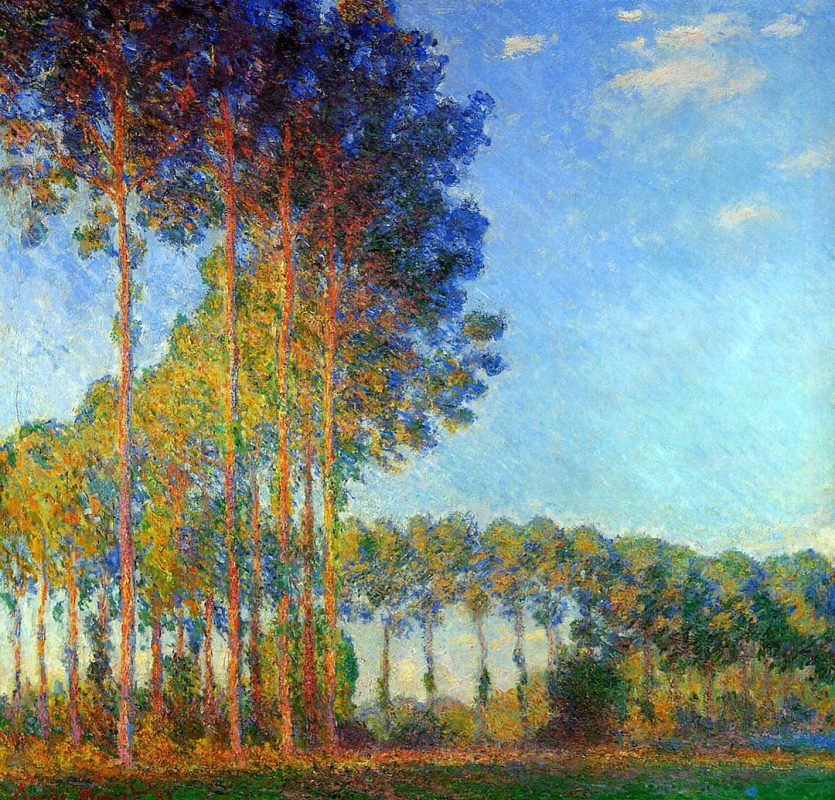
CLAUDE MONET – “Poplars au bord de l’Epte, (poplars at the edge of the Epte, view of the marsh)” – 1891. Oil on canvas, 88 × 93 cm. Private collection.
Claude Monet is the quintessential Impressionist painter, and his lyrical zenith is reached in this strangely irresistible painting. The composition has the strange beauty of a Japanese haiku, asymmetrical and moving, while the leaves of the poplars unfold in a range of reds and purples, concluding in a blue that would make Yves Klein blush with envy. It is, in short, Monet at his best, the artist who “would like to paint as the bird sings”, and who, in works like this one, succeeds to do that.
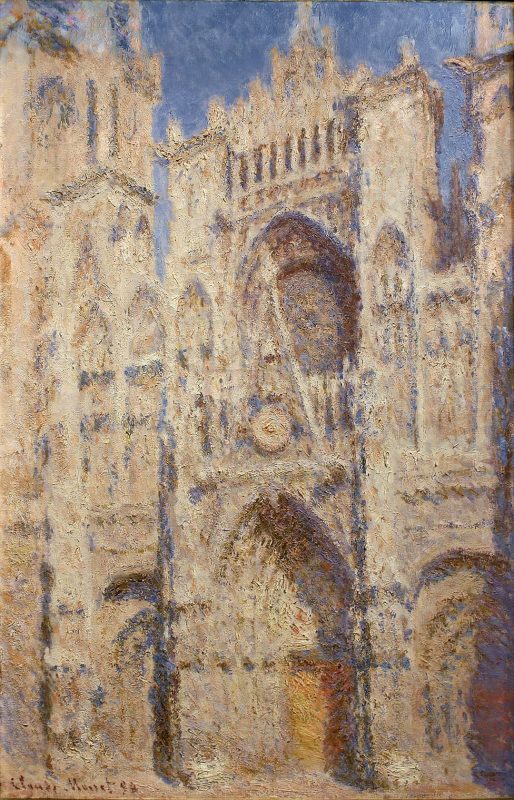
CLAUDE MONET – “The portal of Rouen Cathedral (soleil), harmony in blue and gold,” 1893. Oil on canvas, 99.7 x 65.7 cm. Metropolitan Museum, New York.
“The climax of impressionism”. This is how Claude Monet’s series of views of Rouen Cathedral, painted between 1892 and 1894, has been described. The series -consisting of 31 canvases showing the façade of Rouen’s Gothic cathedral under different light and weather conditions- provoked immediate admiration among the critics of its time, and was praised by many later masters, from Wassily Kandinsky to Roy Lichtenstein.
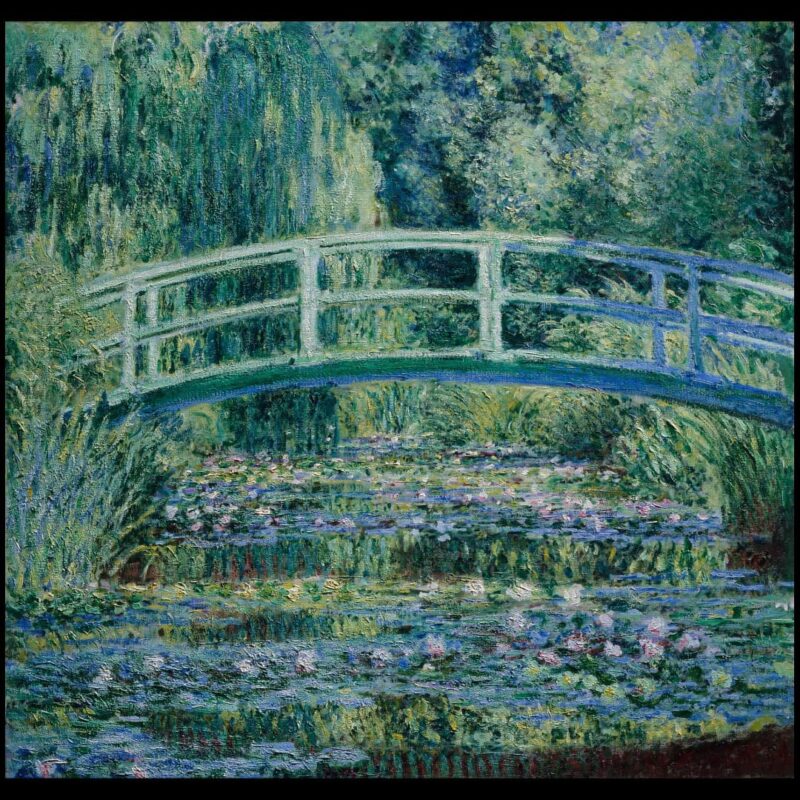
CLAUDE MONET – “Nénuphars et Pont japonais” – 1899. Oil on canvas, 90.5 x 89.7 cm. Princeton University Art Museum
Monet’s series of water lilies has been described as “The Sistine Chapel of Impressionism”. In his earliest works in the series, such as this one, Monet includes the detailed view of his Japanese bridge, while most of the later paintings in the series are almost abstract compositions.
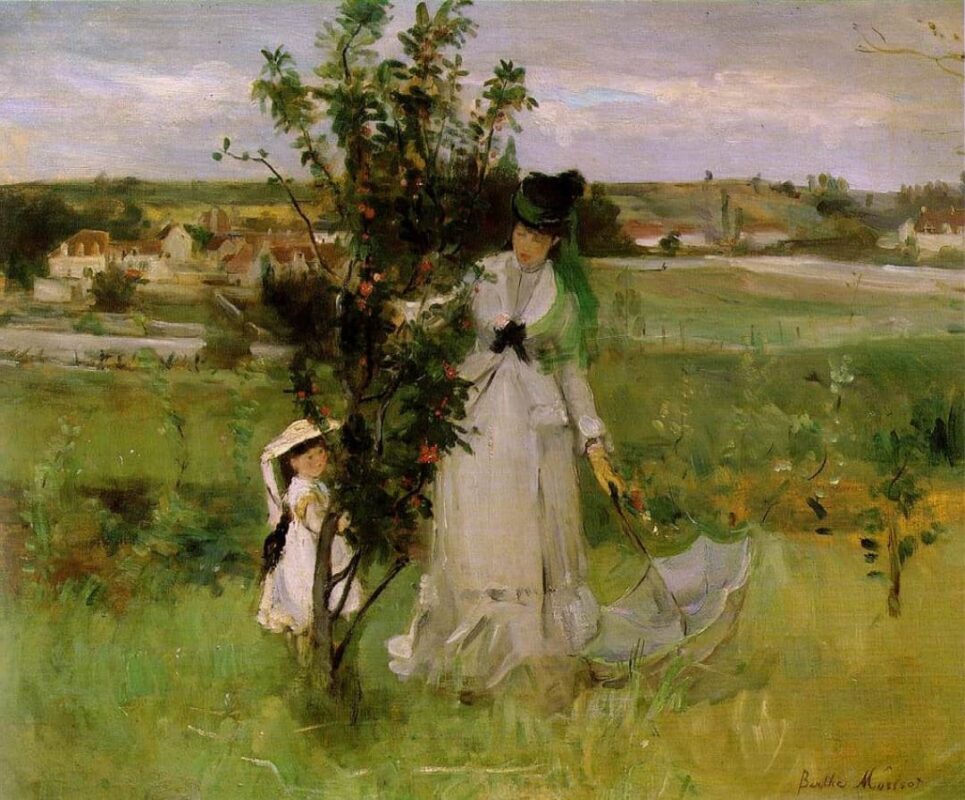
BERTHE MORISOT – “Cache-cache”, 1873. Oil on canvas, 56 x 46 cm. Private collection.
The granddaughter of Fragonard, the famous French classical painter, and raised in a well-to-do family, Morisot was an active member of the Impressionist group, and even Manet praised her loose, agile style. “Cache-cache” beat the record price for a work by Morisot twice (in 1999 and 2005).
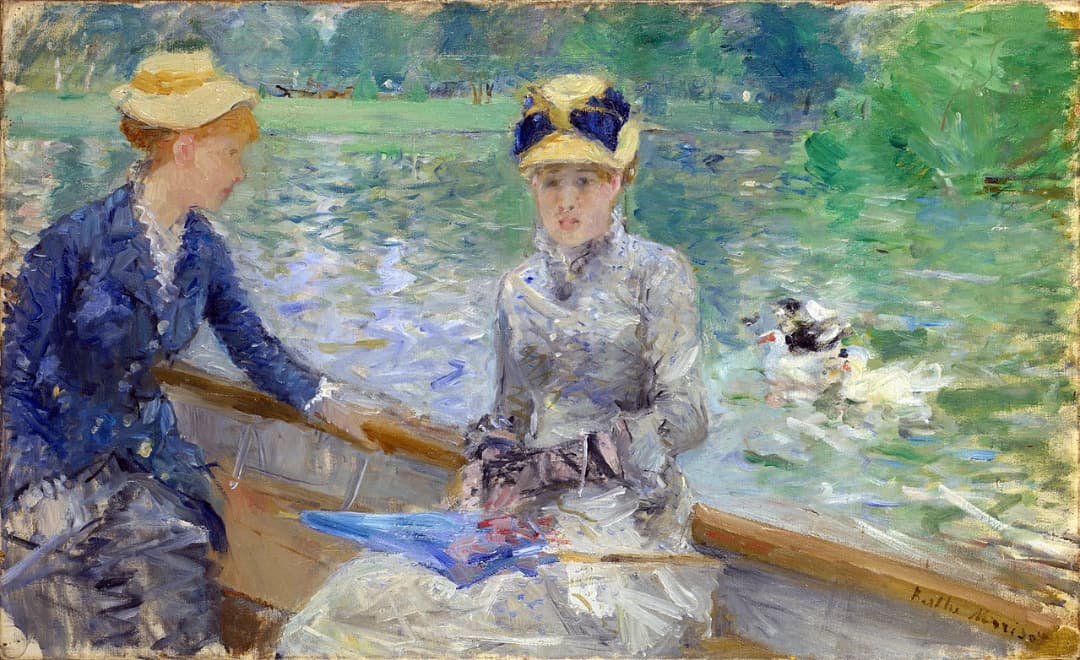
BERTHE MORISOT – “Summer Day”, 1879. Oil on canvas, 45.7 x 75.2 cm. London, National Gallery
Like other painters of her time (Gonzalès, Bracquemond…), Morisot had to deal throughout her life with the unfair treatment they received from critics. Nevertheless, Morisot’s works, especially those painted in the 1870s, rank among the best of “pure” Impressionism.
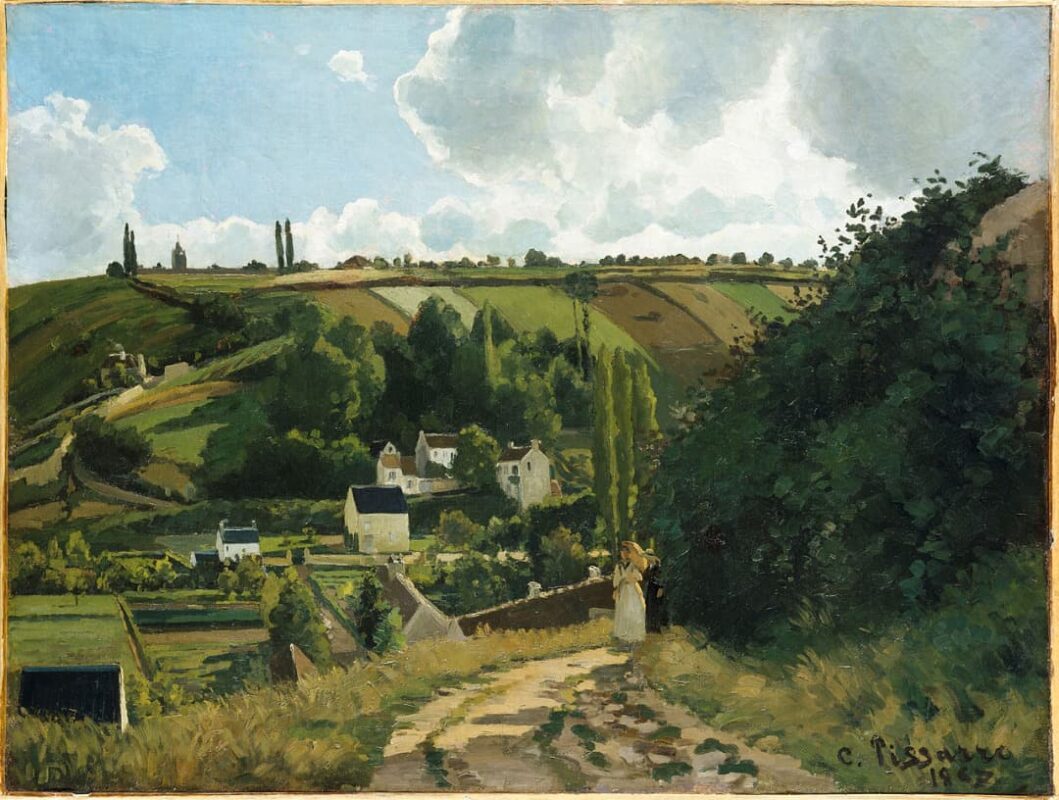
CAMILLE PISSARRO: “La Côte du Jallais Pontoise”, 1867. Oil on canvas, 87 x 115 cm. New York, Metropolitan Museum.
Sometimes called “the Father of Impressionism”, Pissarro is, along with Monet, Morisot and Sisley, the “purest” of the Impressionist painters, exhibiting in all eight Impressionist exhibitions. He is especially famous for his depictions of rural life in northern France, especially in the village of Pontoise, where the influence of the naturalism of Jean-Baptiste Corot and Gustave Courbet is very evident.
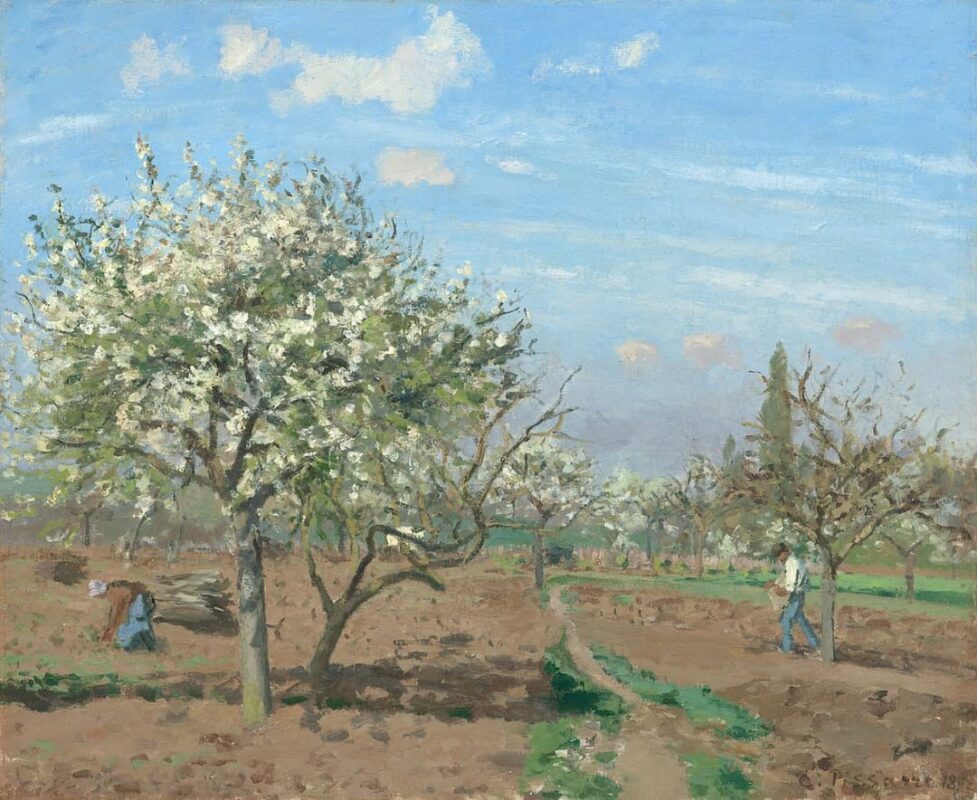
CAMILLE PISSARRO: “Le verger”, 1872. Oil on canvas, 41.5 x 54.9 cm. – National Gallery, Washington
Compared to the previous work, this painting shows the evident stylistic evolution from the “pre-impressionism” of the late 1860s to the pure impressionism of the 1870s onwards.
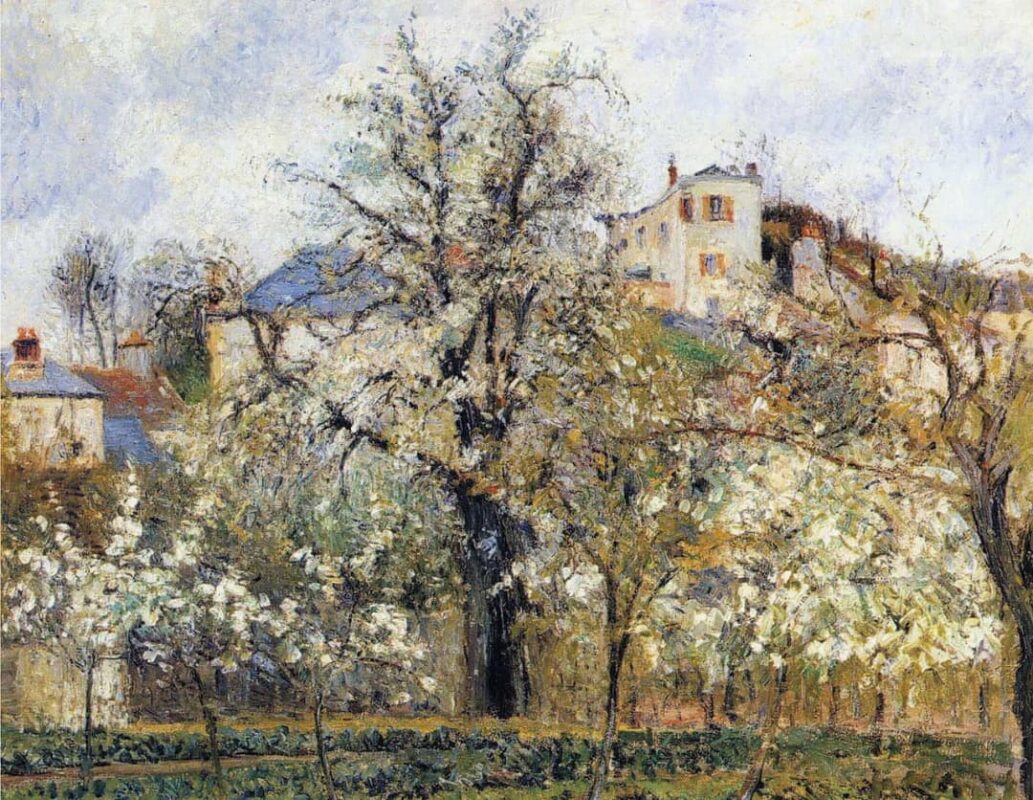
CAMILLE PISSARRO: “Spring, plum blossoms, Pontoise”, 1877. oil on canvas, 65.5 x 81 cm. – Paris, Musée de l’Orsay.
“In a way, we all derive from Pissarro (…) Yes, he was the first impressionist,” Paul Cézanne once wrote. The paintings Pissarro created in Pontoise and Louveciennes in the 1870s are among the most characteristic works of the entire Impressionist movement.
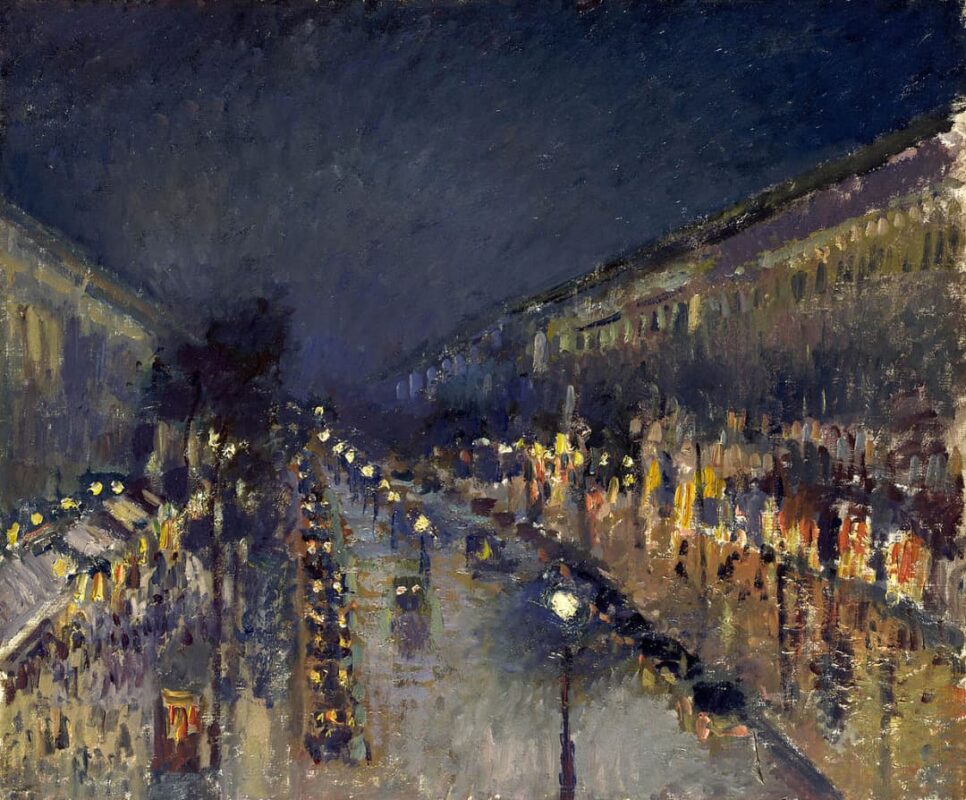
CAMILLE PISSARRO: “Le Boulevard Montmartre, effet de nuit (Boulevard Montmartre, night effect)”, 1897. Oil on canvas, 53.3 x 64.8 cm – London, National Gallery
Although Pissarro is best known for his rural landscapes, he created a large number of excellent urban scenes of Paris. In 1897 he rented a studio on Boulevard Montmartre and depicted this street at different times of the day, this one being the only view at night. “Boulevard Montmartre at Night” is a sensational impressionist painting, although Pissarro never exhibited it in public during his lifetime.
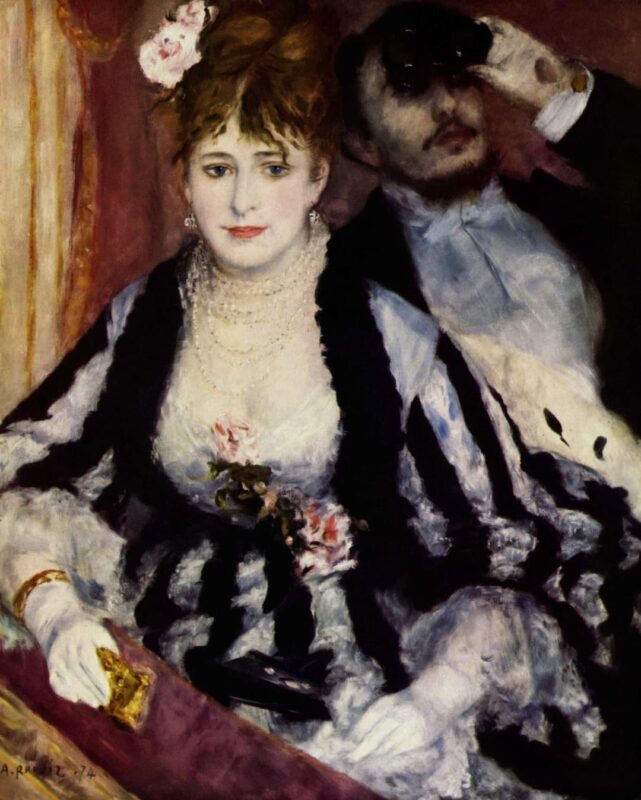
PIERRE-AUGUSTE RENOIR: “La Loge”, 1874. Oil on canvas, 80 x 63,5 cm. Courtauld Institute of Art, London.
“La Loge” is arguably Renoir’s first masterpiece. Although he was one of the most prominent members of the Impressionist movement during the 1870s, Renoir would later abandon this group to embrace a more classical style, inspired by Ingres.
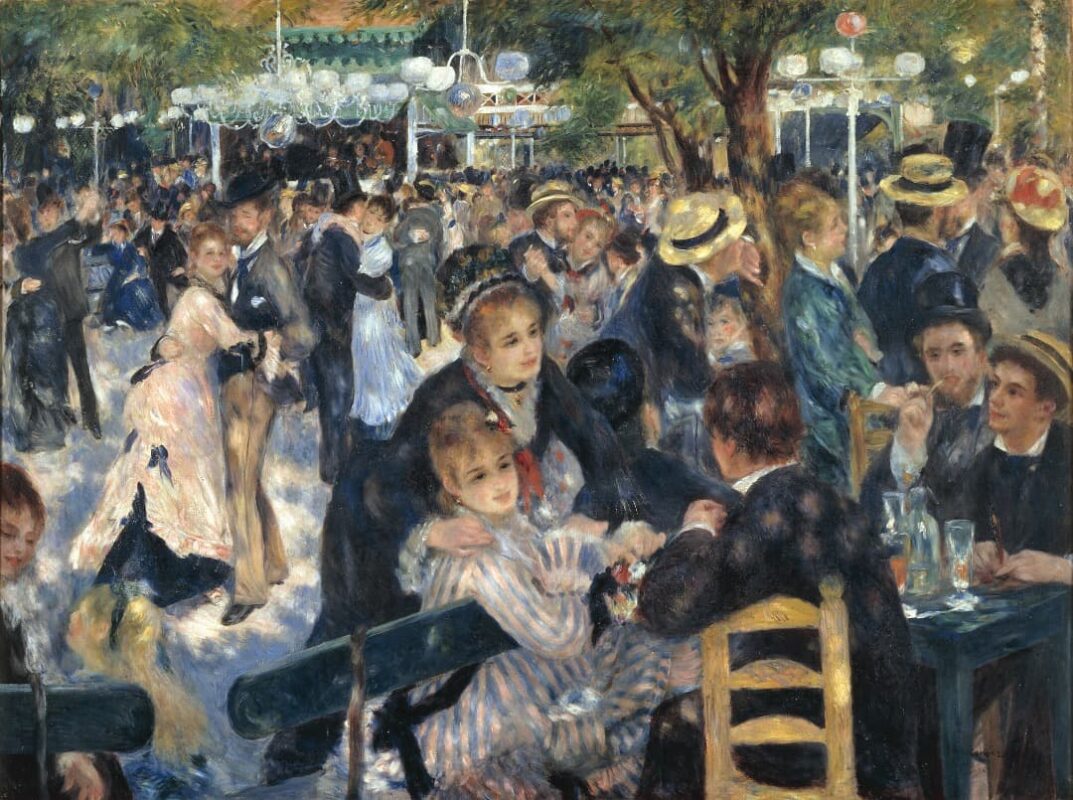
PIERRE-AUGUSTE RENOIR: “Moulin de la Galette”, 1876. Oil on canvas, 131 x 175 cm. Paris, Museo del Orsay.
This painting has sometimes been described as “the most beautiful painting of the 19th century”. The scene depicts one of the many balls held at the Moulin de la Galette, one of the most frequented entertainment venues in Montmartre and a meeting point for bohemians and artists such as Toulouse-Lautrec, Van Gogh and Renoir himself.
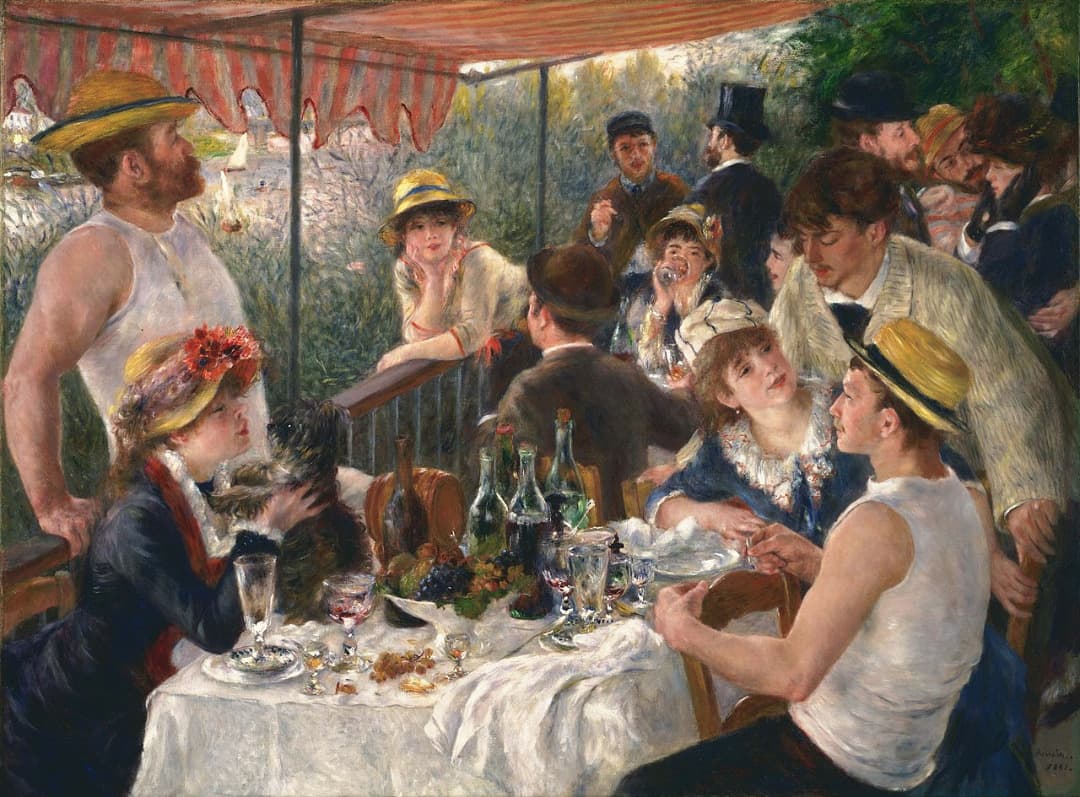
PIERRE-AUGUSTE RENOIR: “Le déjeuner des canotiers (Luncheon of the Boating Party)”, 1880-81. Oil on canvas, 129.5 × 172.7 cm – Washington, Phillips Collection
Light is the main protagonist of this famous painting, in which Renoir has depicted a group of people in a relaxed attitude during a pleasure trip on the Seine River (among them, another famous Impressionist painter, Gustave Caillebotte, who can be seen in the lower right part of the canvas).
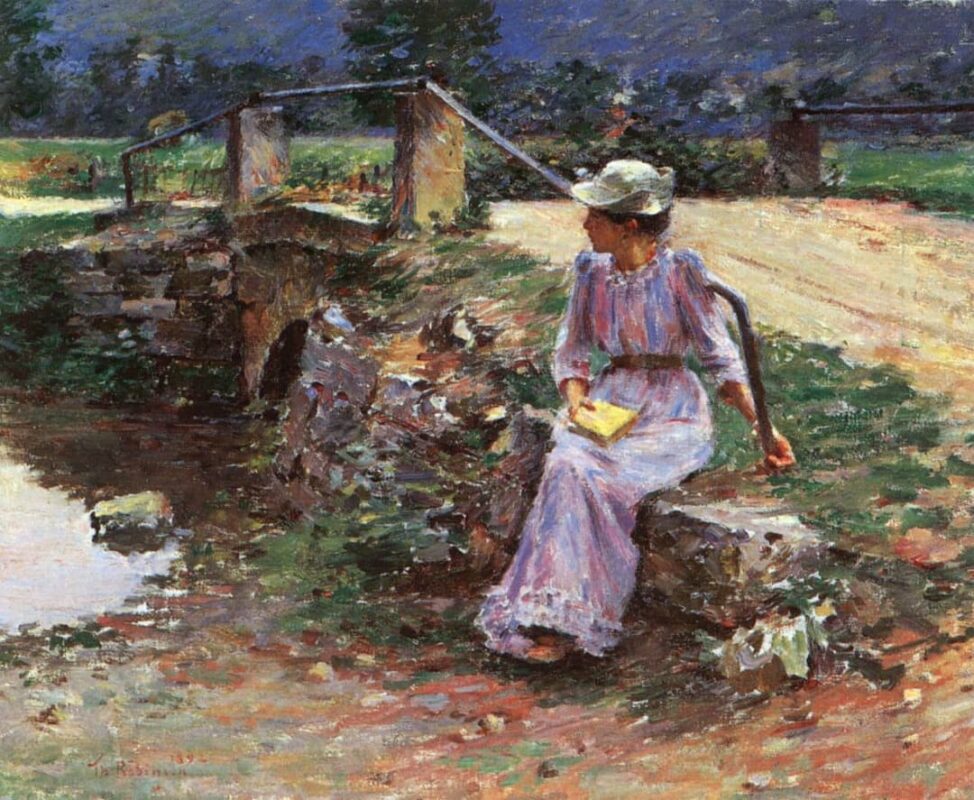
THEODORE ROBINSON: “La débâcle”, 1892. Oil on canvas, 46 x 56 cm. Scripps College, Claremont, California.
Theodore Robinson (1852-1896) was undoubtedly one of the leading figures of American Impressionism. A great friend of Claude Monet, he created some of his best works while living in Giverny, a few months before returning to America. “La dèbâcle” is a typical work by Robinson, executed “au plen air”, depicting a young woman in an idle attitude.
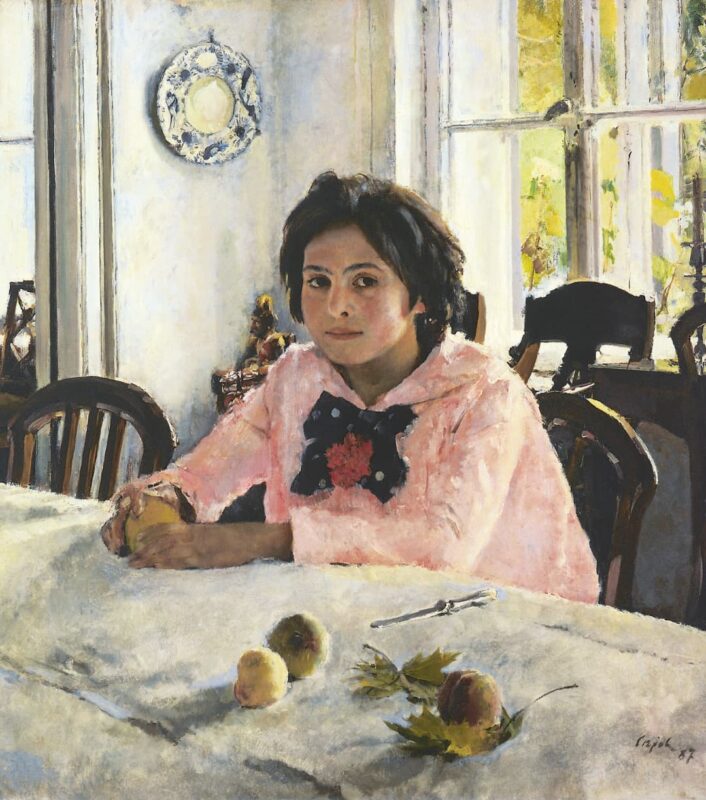
VALENTIN SEROV: “Girl with Peaches”, 1887. Oil on canvas, 91 x 85 cm. Tretyakov Gallery, Moscow.
Along with Korovin, Serov was the leading figure of Russian Impressionism, and “Girl with Peaches” is often considered his masterpiece, and one of the most famous paintings of 19th century Russia, although it is not clear if Serov has had contact with the French Impressionists before painting this canvas.
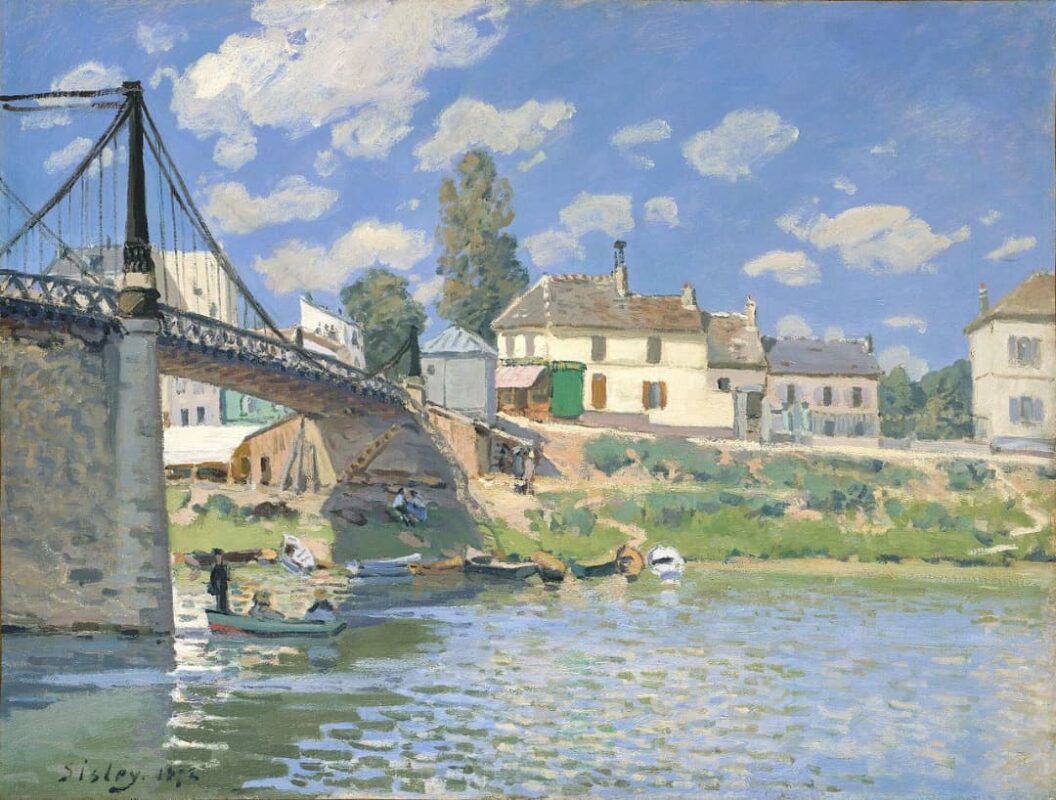
ALFRED SISLEY: “Le Pont de Villeneuve-la-Garenne”, 1872. Oil on canvas, 49,5 x 65,4 cm. New York, Metropolitan Museum
Alfred Sisley was perhaps the most faithful to Impressionism of all the painters, since, unlike almost all the other painters of the group, he never abandoned the style. This painting in the Metropolitan Museum is one of his earliest masterpieces.
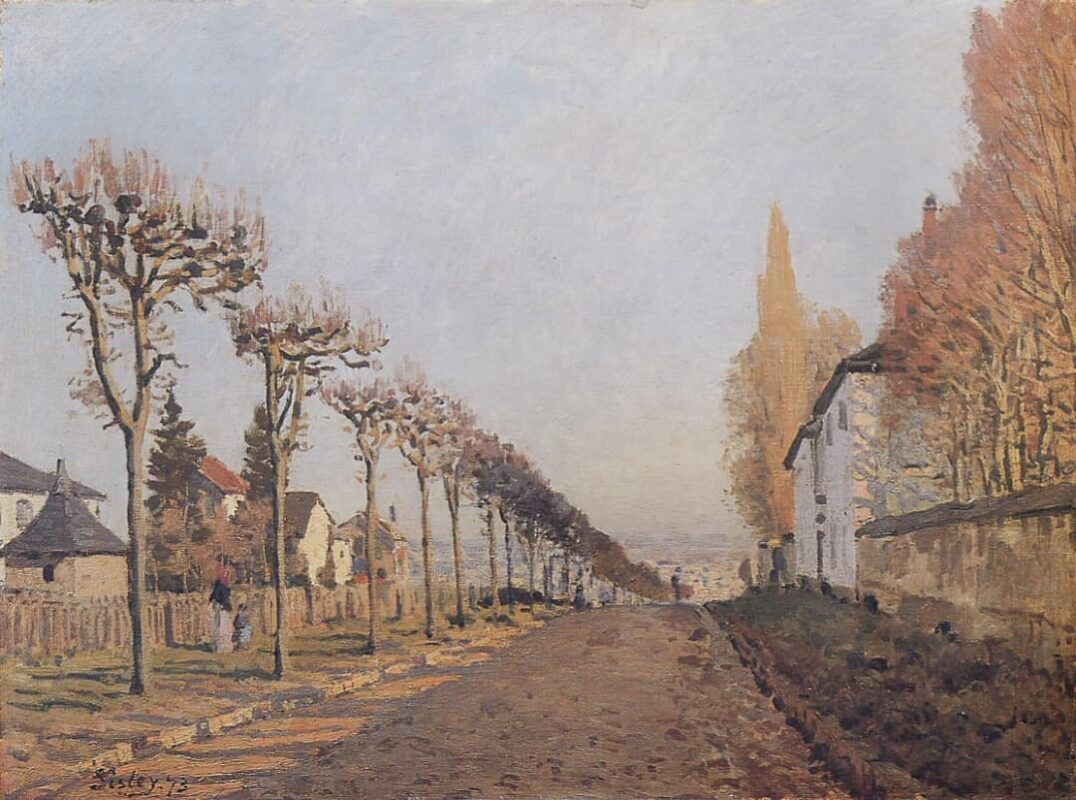
ALFRED SISLEY: “Chemin de la Machine, Louveciennes”, 1873. Oil on canvas. Paris, Musée d’Orsay
The paintings that Sisley made in the small village of Louveciennes are perhaps his greatest achievements, and this simple but powerful composition is good proof of that.
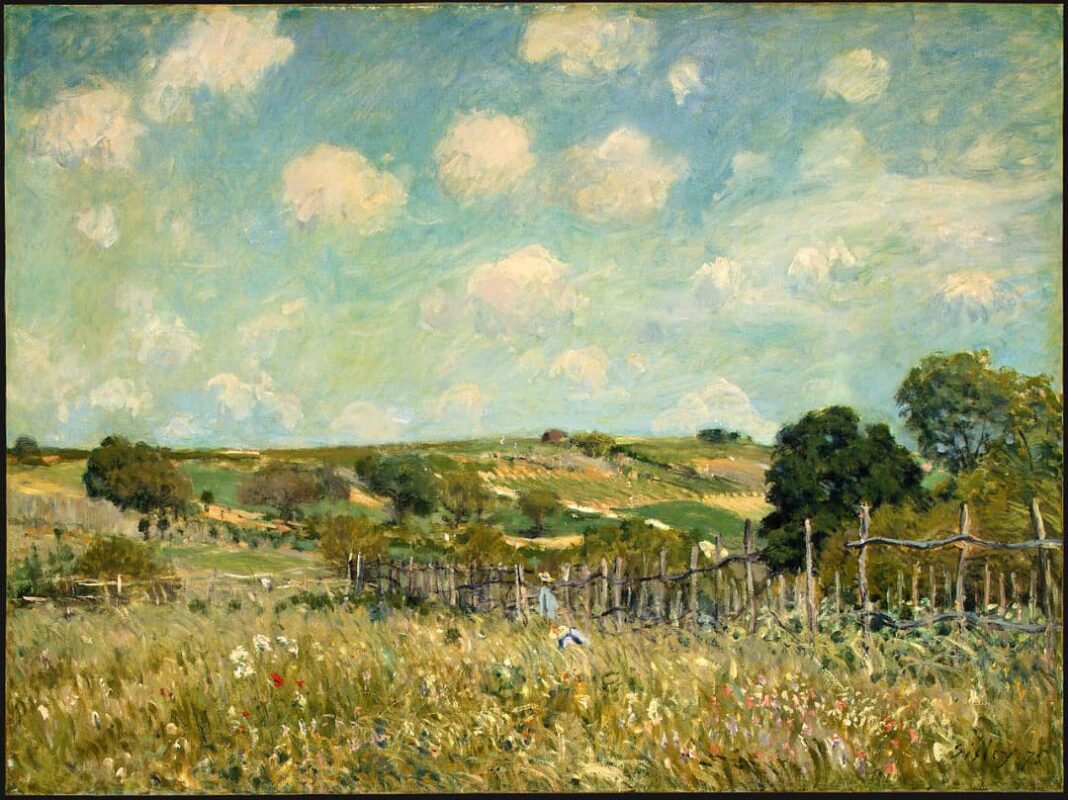
ALFRED SISLEY: “La prairie (Meadow)”, 1875. Oil on canvas, 54.9 × 73 cm. National Gallery, Washington.
This may be the quintessential Impressionist landscape: spontaneous, free, apparently unfinished. The composition is simple, divided into three different planes separated by the fence and the horizon. The foreground is dominated by grasses and flowers. Behind these we see a typical rural landscape, and above it a magnificent sky, reminiscent of the cloud studies created by the English painter John Constable.
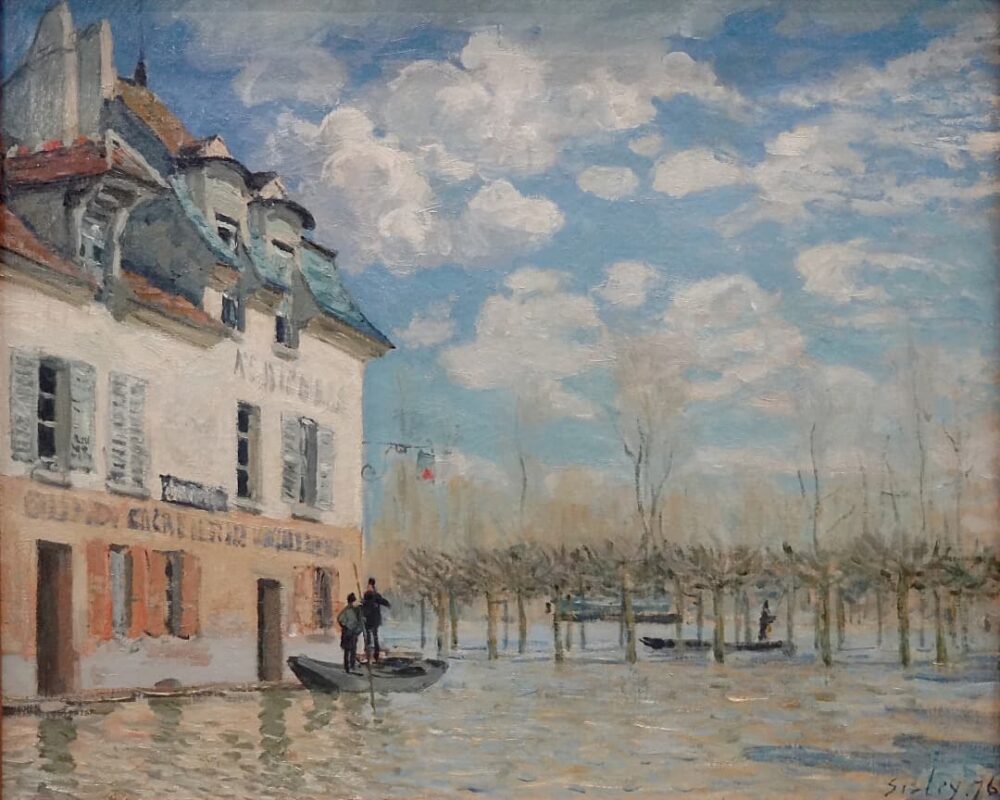
ALFRED SISLEY: “L’inondation à Port-Marly”, 1876. Oil on canvas. Paris, Musée d’Orsay
Sisley painted several canvases depicting the flooding of the Seine in Port-Marly, but the two most outstanding compositions are those depicting the flooding in front of a wine merchant’s store in the Rue de Paris. It is possible to suggest a link between these paintings and the agitated biography of their author: perhaps Sisley saw the floods in the placid town of Port-Marly as a reflection of his own eventful life, overwhelmed after such unpredictable and inevitable events as the flooding of a river.
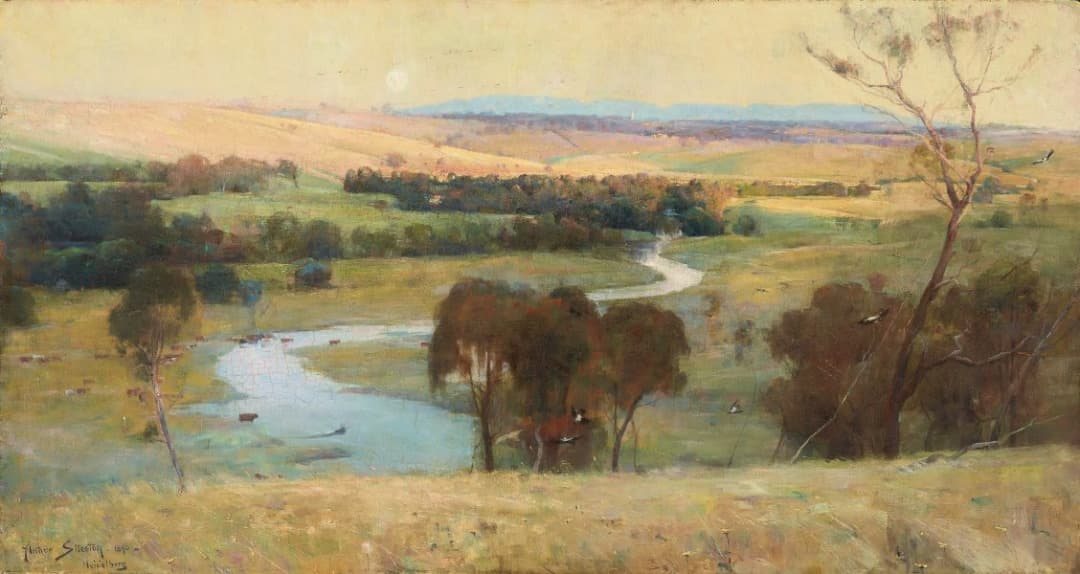
ARTHUR STREETON: “Still glides the stream, and shall for ever glide”, 1890. Oil on canvas, 82.6 x 153.0 cm. Art Gallery of New South Wales.
Along with the aforementioned Charles Conder, Streeton was one of the most prominent representatives of the “Heidelberg School”, sometimes called “Australian Impressionism”. This evocatively named work shows Streeton’s great love of nature, which led him to be not only an outstanding landscape painter, but a social activist for the conservation of Australian nature.
Follow us on:

